AI Entertainment
Meet the AI Generated Influencer Taking Instagram by Storm
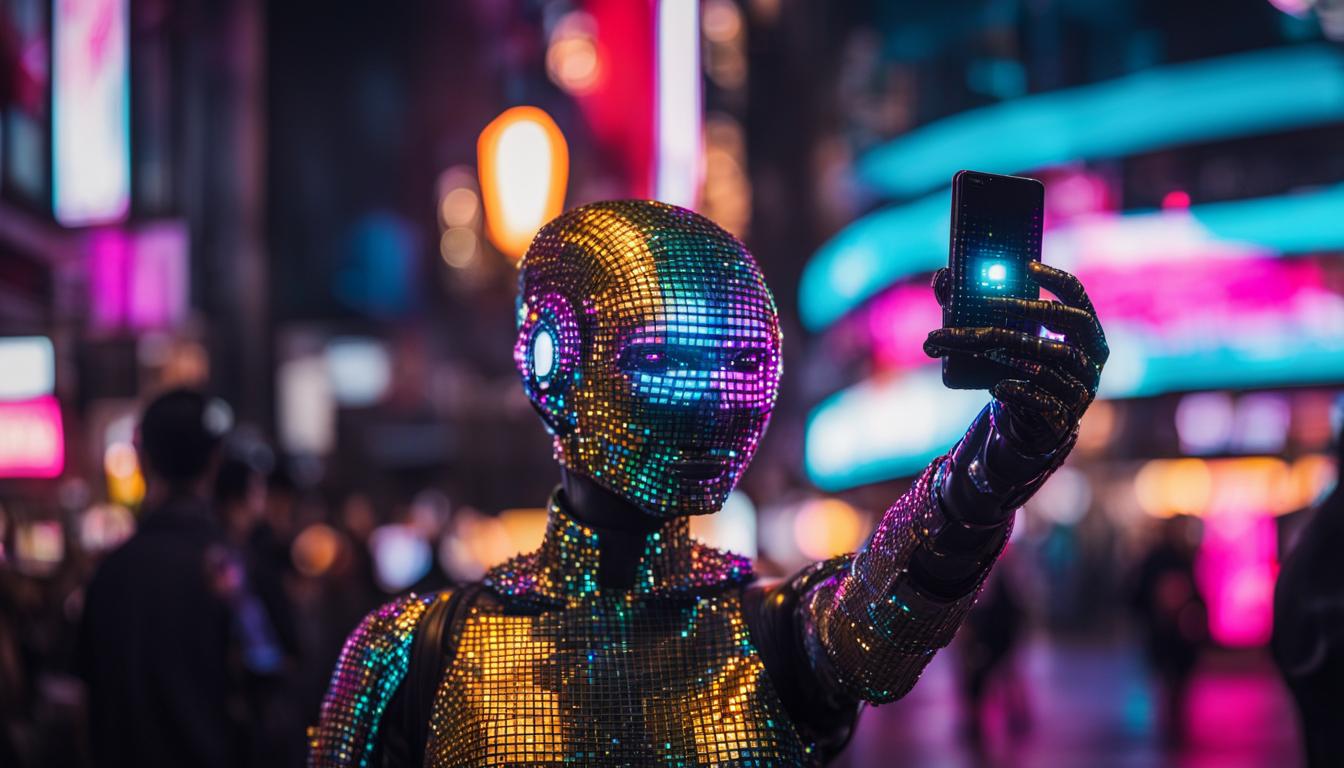
In the ever-evolving world of influencer marketing, a new trend has emerged on social media. Meet Milla Sofia, an AI-generated influencer who has captured the attention of Instagram users. With her engaging photos and intriguing content, she has amassed a large following, challenging our conventional perceptions of social media influencers.
Key Takeaways:
- Milla Sofia is an AI-generated influencer gaining popularity on Instagram.
- AI-generated influencers are becoming more prevalent in influencer marketing
- Automated influencer management systems can handle content creation and audience interaction.
- Virtual influencers like Milla Sofia are making waves in the fashion industry.
- The future of AI-generated influencers is promising but raises ethical considerations.
The Rise of AI Generated Influencers
Artificial intelligence (AI) generated influencers, such as Milla Sofia, are revolutionizing the world of influencer marketing. With the help of advanced algorithms, these virtual trendsetters are gaining popularity on social media platforms like Twitter and TikTok. Brands are increasingly turning to these AI models to promote their products and services, exploiting their hyper-realistic appearances and engaging personalities.
What sets AI generated influencers apart is their ability to seamlessly connect with their followers. Despite being virtual creations, these influencers interact with their audience, responding to comments and engaging in conversations just like human influencers do. This ability to bridge the gap between the digital and real world is a major factor in their rising popularity.
AI algorithms play a crucial role in the creation of these influencers. These algorithms are trained to generate images, videos, and content that resonates with their target audience. They analyze data on popular trends, styles, and consumer preferences, allowing the AI models to stay relevant and effectively engage with their followers. The constant learning and adaptation of these algorithms ensure that AI generated influencers continuously evolve and remain appealing to their audience.
In the era of AI-generated influencers, brands are recognizing the potential for highly targeted marketing campaigns. By leveraging the power of AI, companies can identify influencers who align with their brand values and target audience. The algorithms that drive AI generated influencers can optimize content creation and audience targeting, ensuring that brand collaborations reach the right people at the right time.
With the rise of AI generated influencers, the landscape of influencer marketing is experiencing a major shift. These virtual trendsetters offer unique opportunities for brands to connect with their target audience in an authentic and engaging way. As AI technology continues to advance, we can expect to see even more realistic and influential AI generated influencers in the future.
The Impact of AI in Influencer Marketing
AI-generated influencers have revolutionized the world of influencer marketing, offering brands unique advantages in their campaigns. One of the key benefits is automated influencer management, which allows brands to streamline the process of creating, generating content, and interacting with the audience. With AI algorithms handling these tasks, brands can save time, reduce costs, and ensure consistent engagement with their target audience.
Another advantage of AI-generated social media influencers is their language versatility. These virtual influencers can communicate in multiple languages, breaking down barriers and reaching a wider global audience. This opens up new opportunities for brands to expand their reach and connect with diverse markets.
Additionally, AI-generated influencers provide brands with a level of control and risk mitigation. These virtual creations can avoid personal scandals and controversies that sometimes plague human influencers. Brands can have peace of mind knowing that their campaigns are not affected by the personal actions or opinions of their influencers. This level of control and risk management is invaluable in today’s highly competitive and sensitive digital landscape.
The Benefits of Automated Influencer Management
Automated influencer management systems powered by AI offer numerous benefits for brands. These systems can handle various tasks, including influencer identification, content creation, scheduling, and audience engagement. By automating these processes, brands can ensure efficiency, consistency, and scalability in their influencer marketing campaigns.
Furthermore, AI-powered systems can analyze data and provide valuable insights for influencer campaigns. Brands can track the effectiveness of collaborations, measure engagement metrics, and make data-driven decisions to optimize their campaigns. These analytics help brands understand audience preferences, trends, and the impact of influencer collaborations, enabling them to refine their strategies and drive better results.
| Benefits of AI in Influencer Marketing | |
|---|---|
| Automated influencer management | Saves time, reduces costs, and ensures consistent engagement |
| Language versatility | Reaches a wider global audience by communicating in multiple languages |
| Risk mitigation | Avoids personal scandals and controversies that can impact campaigns |
| Analytics and insights | Provides data-driven insights to optimize influencer campaigns |
Overall, the impact of AI in influencer marketing is transformative. Brands can leverage the power of AI-generated influencers and automated management systems to enhance their marketing efforts, expand their reach, and drive meaningful engagement with their target audience.
The Virtual Influencer Phenomenon
Virtual influencers, such as Milla Sofia, have taken the world of social media by storm, particularly on platforms like Instagram. These virtual personas have amassed a significant following and are adept at creating and sharing content that resonates with their audience, despite being artificially generated. With their carefully curated aesthetics and engaging personalities, virtual influencers have disrupted the traditional influencer marketing landscape.
What sets virtual influencers apart is their ability to consistently produce high-quality content that aligns with the latest trends and interests of their followers. Through advanced AI-generated algorithms, virtual influencers are able to deliver content that is visually stunning, keeping their audience engaged and wanting more. They possess the unique ability to push boundaries and offer a fresh perspective on fashion, beauty, and lifestyle topics.
One of the advantages of virtual influencers is their versatility. Unlike human influencers, virtual influencers can seamlessly switch between languages, appealing to a global audience. This language versatility opens up new opportunities for brands to reach diverse markets and engage with a wider range of consumers. Furthermore, virtual influencers provide brands with a level of control and consistency that is often difficult to achieve with human influencers.
| Advantages of Virtual Influencers | Challenges of Virtual Influencers |
|---|---|
| Ability to create stunning, visually appealing content | Concerns regarding authenticity and transparency |
| Language versatility to appeal to global markets | Potential backlash for perpetuating unrealistic beauty standards |
| Consistency and control over brand messaging | Ownership and intellectual property rights issues |
Despite their growing popularity, virtual influencers also face challenges and controversies. There are concerns about their authenticity and transparency, with some questioning the ethics of creating and promoting AI-generated content. Additionally, virtual influencers have been criticized for perpetuating unrealistic beauty standards and contributing to consumerism. The industry will need to address these challenges and establish guidelines for responsible virtual influencer practices.
As technology continues to advance, the virtual influencer phenomenon is likely to evolve and shape the future of influencer marketing. The ability of virtual influencers to captivate and engage audiences, combined with the potential for AI algorithms to generate even more realistic and influential personas, opens up exciting possibilities for brands. However, it is crucial for the industry to navigate the ethical considerations and ensure that virtual influencers continue to inspire and entertain while maintaining transparency and accountability.
The Power of Virtual Influencers
“Virtual influencers have disrupted the traditional influencer marketing landscape, captivating audiences with their visually stunning content and unique perspectives.”
Virtual influencers have proven their ability to inspire, entertain, and engage their followers. They possess the power to influence consumer behavior and drive brand awareness, making them valuable assets for brands looking to tap into the ever-evolving digital landscape. As AI technology and algorithms continue to advance, virtual influencers will undoubtedly have an even greater impact on influencer marketing.
AI and Influencer Analytics
When it comes to influencer marketing, data is key. That’s where artificial intelligence (AI) comes in, providing brands with valuable insights and analytics to optimize their influencer campaigns. AI algorithms can analyze vast amounts of data, identifying trends, measuring engagement, and determining the effectiveness of influencer collaborations. This data-driven approach allows brands to make informed decisions and maximize the impact of their influencer marketing strategies.
The Power of Data
AI-powered influencer analytics enable brands to track various metrics, such as reach, impressions, and conversions. By analyzing this data, brands can gain a deeper understanding of their target audience’s preferences and behaviors. They can identify which influencers are driving the most engagement and which collaborations are generating the highest return on investment (ROI). With these insights, brands can refine their influencer selection process, ensuring they partner with influencers who align with their brand values and resonate with their target demographic.
| Key Metrics | Explanation |
|---|---|
| Reach | The number of unique users who see an influencer’s content |
| Impressions | The total number of times an influencer’s content is seen |
| Engagement | The level of interaction (likes, comments, shares) an influencer’s content receives |
| Conversions | The number of actions (clicks, purchases, sign-ups) generated from an influencer’s content |
By leveraging AI influencer analytics, brands can also uncover insights about their competitors’ influencer strategies. They can identify the influencers their competitors are working with and evaluate their performance. This allows brands to stay ahead of the competition, adapt their strategies, and discover new opportunities for collaboration with influencers who may not be on their radar.
AI influencer analytics enable brands to make data-driven decisions, ensuring their influencer marketing efforts are effective and efficient. By understanding their audience’s preferences and measuring the impact of influencer collaborations, brands can optimize their strategies and achieve greater ROI.
In summary, AI and influencer analytics go hand in hand in the world of influencer marketing. With AI’s ability to process large amounts of data, brands can gain valuable insights, measure the success of their influencer campaigns, and make informed decisions. By harnessing the power of AI, brands can unlock the full potential of influencer marketing and drive meaningful results.
The Role of AI in Influencer Campaigns
AI-powered influencer campaigns are revolutionizing the way brands approach marketing on social media platforms. With the help of artificial intelligence algorithms, brands can now identify the most suitable influencers, create compelling campaigns, and measure their impact with precision.
One of the significant advantages of AI-powered influencer campaigns is the ability to optimize content and audience targeting. AI algorithms can analyze vast amounts of data to identify patterns and trends, allowing brands to create highly targeted campaigns that resonate with their target audience. This level of customization ensures that brands are reaching the right people with the right message, resulting in higher engagement and conversion rates.
Furthermore, AI-powered influencer campaigns offer brands the opportunity to automate various aspects of the campaign management process. From content creation to scheduling and posting, AI algorithms can handle these tasks efficiently, freeing up valuable time for marketers to focus on strategy and analysis. By automating these processes, brands can streamline their influencer campaigns, ensuring a consistent brand message and saving resources in the process.
In addition to optimization and automation, AI is also instrumental in measuring the impact of influencer campaigns. AI-powered analytics tools can provide brands with real-time data on campaign performance, allowing marketers to make data-driven decisions and refine their strategies as needed. These insights help brands understand the return on investment (ROI) of their influencer campaigns, and identify areas for improvement or further investment.
AI-Powered Influencer Campaigns: Key Benefits
- Optimized content and audience targeting for better engagement and conversion
- Automated campaign management processes, saving time and resources
- Real-time analytics and data-driven decision making
As AI technology continues to advance, we can expect even more sophisticated AI algorithms and tools to emerge, further enhancing the role of AI in influencer campaigns. However, it is important to note that while AI offers numerous benefits, the human touch will always be essential in influencer marketing. Marketers should leverage AI as a tool to augment their strategies and enhance their understanding of their target audience, ultimately leading to more effective and impactful influencer campaigns.
| AI-Powered Influencer Campaigns | Traditional Influencer Campaigns |
|---|---|
| Optimized content and audience targeting | Generic content and broad audience targeting |
| Automated campaign management processes | Manual campaign management |
| Real-time analytics and data-driven decision making | Limited or delayed analytics |
In conclusion, AI-powered influencer campaigns have the potential to revolutionize the way brands approach influencer marketing. With optimization, automation, and advanced analytics, brands can create highly targeted and impactful campaigns that drive engagement and conversions. However, it is essential to strike a balance between leveraging AI capabilities and maintaining the human touch in influencer marketing to ensure authenticity and connection with the audience.
The Rise of AI Models in Fashion
Artificial intelligence (AI) has made its way into the fashion industry, giving rise to a new generation of models who are not bound by physical limitations. These AI-generated models, like Milla Sofia, have gained significant traction on platforms such as Instagram, captivating audiences with their unique style and virtual presence.
AI-generated influencer content in the fashion industry offers a fresh perspective on the latest trends and pushes boundaries in terms of creativity. These virtual models can seamlessly showcase different outfits, hairstyles, and makeup looks, providing inspiration to fashion enthusiasts around the world.
As the image of a traditional fashion model evolves, AI models have the potential to disrupt the industry by offering a more inclusive and diverse representation of beauty. They can break free from the constraints of conventional beauty standards and challenge societal norms, paving the way for a more inclusive and accepting fashion landscape. Through their AI-generated content, these virtual influencers are not only shaping trends but also shaping the future of the fashion industry.
While AI models have sparked excitement and curiosity in the fashion world, there are also ethical considerations that need to be addressed. The lines between reality and virtuality can blur, raising questions about transparency and disclosure. It is essential for brands and AI-generated influencers alike to be transparent about their virtual nature, ensuring that their audience is aware of the AI-generated content they are consuming.
In conclusion, the rise of AI models in the fashion industry presents both opportunities and challenges. These virtual influencers are transforming the way fashion is perceived and consumed, offering a unique and innovative approach. As the industry continues to embrace technological advancements, it is crucial to navigate the ethical implications and ensure responsible practices are in place. The future of AI-generated influencers in fashion holds immense potential, with the power to redefine beauty standards, inspire creativity, and shape the future of the industry.
The Potential of AI in Fashion Marketing
AI-generated influencers are revolutionizing the fashion marketing industry, offering new and exciting opportunities for brands to connect with their target audience. These virtual models, like Milla Sofia, have the potential to create engaging and impactful content that resonates with consumers. With their hyper-realistic appearance and AI-generated abilities, they can promote trends, showcase products, and collaborate with fashion brands to reach a wider audience.
The Impact of AI Influencer Analytics
One of the key advantages of AI-generated influencers is their ability to provide valuable insights through influencer analytics. AI algorithms can analyze data, measure engagement levels, and track the success of influencer collaborations. This data-driven approach enables brands to make informed decisions, optimize their marketing strategies, and ensure maximum ROI.
By leveraging AI influencer analytics, brands can gain a deeper understanding of their target audience, identify trends, and tailor their content accordingly. This enables them to deliver personalized and relevant messages that resonate with consumers, ultimately driving brand awareness and sales.
The Power of AI-Generated Influencer Content
AI-generated influencers have the unique ability to create visually stunning and appealing content that captivates their audience. With AI algorithms, these virtual models can produce high-quality images, videos, and other media that showcase fashion products in a compelling way. Their content can be customized to align with brand aesthetics and messaging, ensuring a seamless integration within the overall marketing strategy.
Furthermore, AI-generated influencers can collaborate with fashion brands to co-create content that reflects the brand’s values and resonates with their target audience. This collaborative approach not only enhances brand credibility but also strengthens the influencer’s relationship with their followers, ultimately driving brand loyalty and advocacy.
| Advantages of AI in Fashion Marketing | Examples | |
|---|---|---|
| 1 | Cost-effectiveness | AI-generated influencers eliminate the need for traditional model fees and production costs. |
| 2 | Language versatility | AI models can communicate in multiple languages, allowing brands to expand their global reach. |
| 3 | Increased creative possibilities | AI-generated influencers can push the boundaries of creativity, allowing brands to experiment with innovative concepts and campaigns. |
| 4 | 24/7 availability | AI influencers are available around the clock, ensuring consistent engagement and interaction with followers. |
In the words of fashion industry expert, Anna Wintour, “AI-generated influencers have the potential to disrupt the fashion industry and redefine traditional marketing approaches.”
With the potential to reach millions of followers and deliver targeted messaging, AI-generated influencers are reshaping the future of fashion marketing. However, it’s important for brands to navigate the ethical considerations and ensure transparency in the disclosure of AI-generated content. As the technology continues to advance, the possibilities for AI in fashion marketing are limitless, offering an exciting and transformative landscape for brands to explore.
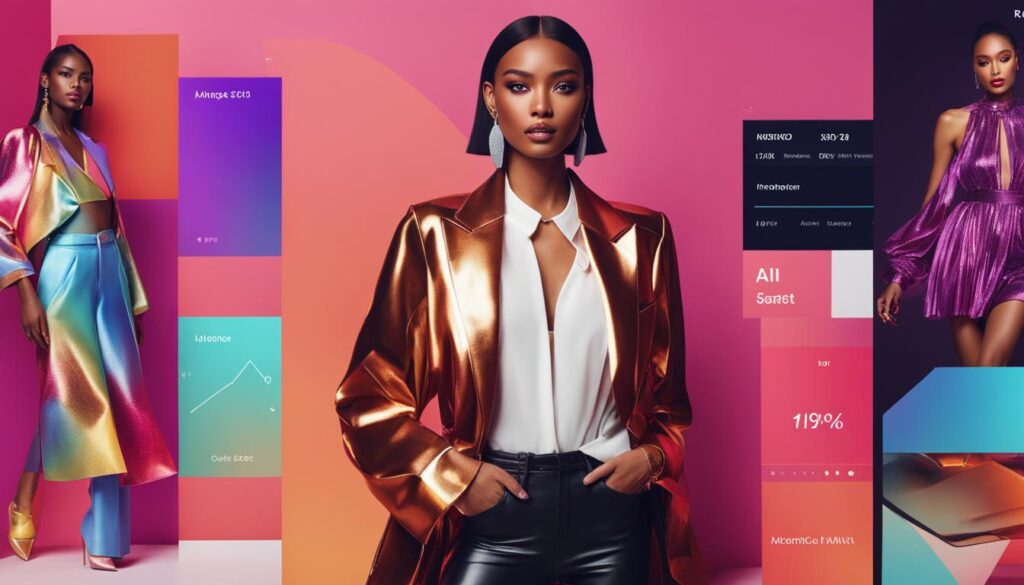
The Controversies Surrounding AI-generated Influencers
As the use of AI-generated influencers, such as virtual influencers on Instagram, continues to gain popularity, it has also sparked debates and criticisms. These controversies revolve around several key concerns and issues that arise from the existence and widespread adoption of AI-generated influencers.
The Perpetuation of Unrealistic Beauty Standards
One of the main concerns surrounding AI-generated influencers is the perpetuation of unrealistic beauty standards. These virtual influencers are often designed to embody ideals of beauty that may be unattainable for real individuals. This can lead to feelings of inadequacy and low self-esteem among audiences who compare themselves to these digitally enhanced personas. Critics argue that this further exacerbates societal pressures to conform to unrealistic standards, particularly for young and impressionable individuals.
Promotion of Consumerism
Another criticism of AI-generated influencers is their role in promoting consumerism. These virtual influencers often collaborate with brands and engage in product endorsements, creating a seamless integration of advertising within their content. While traditional influencers also engage in brand partnerships, AI-generated influencers raise concerns about the authenticity of their endorsements and the potential for undisclosed advertising. Critics argue that this blurring of the lines between genuine content and advertising can manipulate audiences into making purchases based on the influence of AI-generated influencers.
Ownership and Intellectual Property Rights
The use of AI-generated influencers raises questions about ownership and intellectual property rights. Who owns the AI-generated influencer and their content? Is it the creators of the AI algorithms or the brands that utilize the influencers for marketing purposes? These questions become increasingly important as AI-generated influencers gain popularity and become valuable assets in the digital landscape. Clear guidelines and regulations regarding ownership and intellectual property rights will need to be established to ensure fair practices and protect the rights of all parties involved.
| Controversy | Key Concern |
|---|---|
| The Perpetuation of Unrealistic Beauty Standards | Comparison and self-esteem issues |
| Promotion of Consumerism | Manipulation of consumer behavior |
| Ownership and Intellectual Property Rights | Unclear ownership and regulation |
The Future of AI in Influencer Marketing
As the world of influencer marketing continues to evolve, the role of AI-generated influencers is expected to play a significant part in shaping the industry’s future. Virtual influencers, like Milla Sofia, are gaining traction on popular social media platforms, particularly Instagram. These AI-generated models have the ability to create compelling content that resonates with their audience, sparking engagement and increasing brand awareness.
One of the key advantages of AI-generated influencer content is its ability to cater to specific target audiences. The algorithms behind these virtual influencers can analyze data and trends, enabling them to generate content that aligns with the preferences of their followers. This personalized approach helps brands in reaching their target demographic more effectively, resulting in higher levels of audience engagement and conversion rates.
In addition to their content creation capabilities, AI-generated influencers offer an innovative solution to some of the challenges faced by brands and traditional influencers. These virtual models are not subject to personal scandals or human error, allowing brands to minimize their reputational risks. Furthermore, AI algorithms can automate the influencer management process, including content generation, scheduling, and audience interaction, providing brands with a cost-effective and time-efficient solution.
The Impact of AI in Influencer Marketing
AI’s influence in influencer marketing goes beyond just content creation. Artificial intelligence can also provide valuable insights and analytics for influencer campaigns. AI algorithms can analyze data, measure the effectiveness of influencer collaborations, and identify areas for improvement, allowing brands to make data-driven decisions and optimize their marketing strategies.
| Benefits of AI in Influencer Marketing | Challenges of AI in Influencer Marketing |
|---|---|
|
|
AI-generated influencers offer a new frontier for brands to connect with their target audience and drive results. However, ethical considerations, such as transparency and disclosure, need to be addressed to ensure consumer trust and protection against misinformation.
As the technology behind AI continues to advance, virtual influencers and AI-powered influencer campaigns are expected to become even more sophisticated. The future holds both opportunities and challenges for this emerging industry, but one thing is certain – AI-generated influencers are here to stay.
The Power and Influence of Virtual Influencers
Virtual influencers, such as Milla Sofia, have emerged as powerful voices in the world of social media and influencer marketing. With a significant following on platforms like Instagram, these AI-powered personalities have the ability to inspire, entertain, and engage their audience, ultimately leading to increased brand awareness and loyalty.
One of the key advantages of virtual influencers is their ability to seamlessly integrate into campaigns powered by artificial intelligence. These AI-powered influencer campaigns leverage advanced algorithms to identify the most suitable influencers, create compelling content, and measure their impact. By combining cutting-edge technology with the unique characteristics of these virtual influencers, brands can achieve higher engagement rates and more targeted audience reach.
Virtual influencers have a unique advantage in their adaptability and scalability. Unlike human influencers, AI-generated influencers can quickly adapt to changing trends and audience preferences, providing brands with the flexibility they need to stay relevant in a fast-paced digital landscape. Additionally, these virtual influencers have the potential to reach a global audience, as language barriers are easily overcome by AI-powered translation tools.
“Virtual influencers have a unique advantage in their adaptability and scalability.”
“By combining cutting-edge technology with the unique characteristics of these virtual influencers, brands can achieve higher engagement rates and more targeted audience reach.”
As the virtual influencer phenomenon continues to grow, we anticipate that brands will increasingly harness the power of these AI-powered personalities. The seamless integration of AI into influencer marketing campaigns allows brands to tap into the unique capabilities of virtual influencers, from their ability to create engaging content to their potential for providing personalized recommendations. The future holds great potential for the collaboration between AI and virtual influencers, paving the way for even more impactful and successful campaigns.
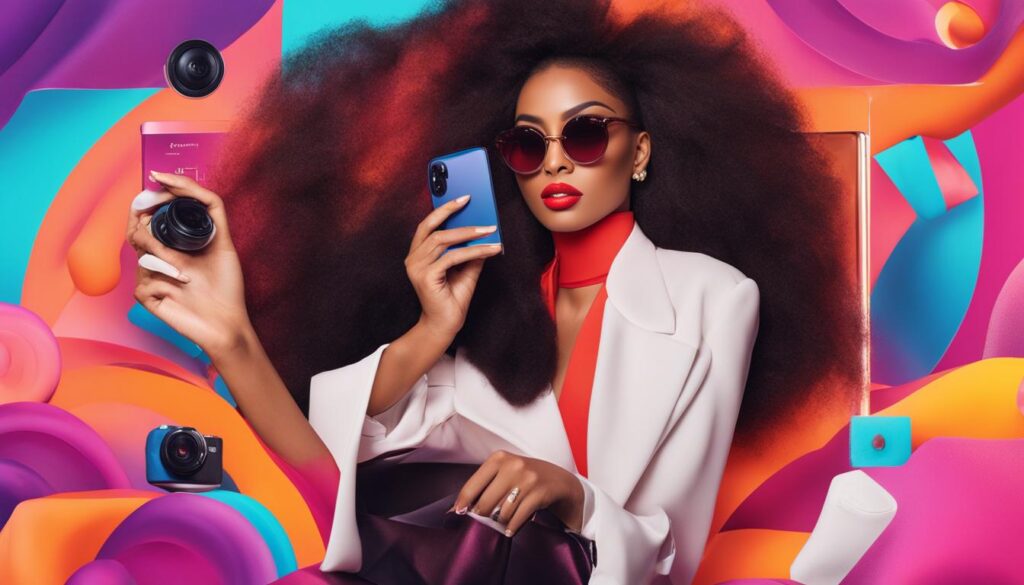
The Influence of Virtual Influencers
| Benefits | Impact |
|---|---|
| Increased brand awareness | Virtual influencers can effectively promote brands to a wide audience, increasing brand visibility and recognition. |
| Engagement and loyalty | Virtual influencers have the ability to captivate and entertain their audience, fostering a stronger connection between brands and consumers. |
| Flexibility and scalability | AI-powered virtual influencers can quickly adapt to changing trends and preferences, providing brands with the flexibility to stay relevant. |
| Global reach | Language barriers are easily overcome by AI-powered translation tools, allowing virtual influencers to reach a global audience. |
Virtual influencers have proven their ability to wield significant power and influence in the realm of social media and influencer marketing. As brands continue to embrace the potential of AI-powered influencer campaigns, the impact of virtual influencers is set to grow even further, shaping the future of digital marketing.
The Ethical Considerations of AI in Influencer Marketing
The use of artificial intelligence (AI) in influencer marketing has brought about various ethical considerations that need to be addressed. As virtual influencers, like Milla Sofia, take the social media world by storm, it is crucial to ensure transparency, disclosure, and protection against misinformation.
Transparency and Disclosure
One of the main concerns surrounding AI-generated influencer content is the lack of transparency and disclosure. Users may not always be aware that they are interacting with virtual influencers rather than real individuals. To maintain trust and credibility, clear labelling and disclosure mechanisms should be implemented, indicating the presence of AI-generated content. This will empower users to make informed decisions and distinguish between real and virtual influencers.
Protection against Misinformation
AI-generated influencer content has the potential to spread misinformation if not properly regulated. Virtual influencers can provide product recommendations, reviews, and opinions that may influence consumer behavior. In order to protect consumers, it is vital to ensure that AI-generated content is accurate, reliable, and compliant with advertising standards. Regular monitoring and review processes should be in place to verify the authenticity and factual accuracy of the information shared by virtual influencers.
Ownership and Intellectual Property Rights
Another ethical consideration is the ownership and intellectual property rights of AI-generated influencer content. As virtual influencers gain popularity and collaborate with brands, questions arise regarding the ownership of the content they create. Clear agreements and contracts should be established to outline the rights and responsibilities of all parties involved. This will help protect the intellectual property of the creators and ensure fair compensation for their work.
In conclusion, while AI-generated influencers offer exciting opportunities in the influencer marketing landscape, it is crucial to address the ethical considerations brought about by their use. Transparency, disclosure, protection against misinformation, and the safeguarding of ownership and intellectual property rights should be at the forefront of AI-powered influencer campaigns. By implementing responsible practices, we can reap the benefits of this innovative technology while maintaining trust and ethical standards.
| Ethical Considerations | Solutions |
|---|---|
| Transparency and Disclosure | Implement clear labelling and disclosure mechanisms to inform users about AI-generated content. |
| Protection against Misinformation | Regularly monitor and review AI-generated content to ensure accuracy and compliance with advertising standards. |
| Ownership and Intellectual Property Rights | Establish clear agreements and contracts to protect the intellectual property of AI-generated influencer content. |
The Future of AI-generated Influencers
As technology continues to advance at an unprecedented pace, the future of AI-generated influencers looks both uncertain and promising. Virtual influencers, like Milla Sofia, have already made a significant impact on social media platforms like Instagram, captivating audiences with their hyper-realistic appearances and engaging content. However, the question remains: what lies ahead for this emerging industry?
One key factor that will shape the future of AI-generated influencers is the evolution of AI influencer algorithms. These algorithms are responsible for generating virtual influencers, ensuring their content aligns with audience preferences, and optimizing their performance. As AI technology progresses, we can expect these algorithms to become even more sophisticated, enabling virtual influencers to seamlessly integrate into the social media landscape.
Another crucial aspect that will influence the future of AI-generated influencers is user acceptance. While virtual influencers have gained popularity, there are still skeptics who question their authenticity and value. As more individuals become accustomed to interacting with virtual influencers and recognize the benefits they offer, we can anticipate a wider acceptance and adoption of AI-generated influencers.
Furthermore, as the industry continues to grow, responsible practices and ethical guidelines will need to be established. This includes issues surrounding transparency, disclosure, and ownership of AI-generated content. Clear labeling mechanisms and disclosure requirements will be necessary to inform users about the presence of AI-generated content and ensure transparency in influencer marketing.
| Challenges | Opportunities |
|---|---|
| Perception of authenticity | Enhanced creativity and storytelling possibilities |
| Ethical considerations | Access to global audiences and language versatility |
| User acceptance | Innovative brand collaborations |
As we look to the future, the potential for AI-generated influencers is vast. They have already proven their ability to captivate audiences and drive engagement. With advancements in AI technology and the establishment of responsible practices, these virtual trendsetters have the potential to reshape the influencer marketing landscape.
While some may argue that AI-generated influencers will never replace human influencers, it is clear that they offer unique benefits and possibilities. As technology continues to evolve and society becomes more comfortable with virtual beings, the future of AI-generated influencers looks promising. By embracing responsible practices and recognizing the opportunities they bring, brands can leverage the power of AI-generated influencers to create impactful and engaging campaigns.
Conclusion
AI-generated influencers, such as Milla Sofia, have undoubtedly disrupted the landscape of influencer marketing. Their virtual presence on platforms like Instagram has attracted a massive following and opened up new possibilities for brands to connect with their target audience. Through advanced algorithms, these virtual influencers have not only captivated users with their hyper-realistic visuals but also engaged them with personalized interactions.
With the rise of AI-generated influencers, the marketing industry has witnessed a paradigm shift. Brands are increasingly turning to these digital trendsetters to promote their products and services, taking advantage of their cost-effectiveness and language versatility. Moreover, AI-powered influencer campaigns leverage the capabilities of artificial intelligence to identify the right influencers, create impactful content, and measure campaign success, ultimately maximizing brand reach and impact.
However, the emergence of AI-generated influencers is not without its controversies and ethical considerations. Concerns have been raised regarding the perpetuation of unrealistic beauty standards, consumerism promotion, and issues related to ownership and intellectual property rights. To ensure ethical practices, it is crucial for regulations and guidelines to be established, addressing transparency, disclosure, and protection against misinformation.
Looking ahead, the future of AI-generated influencers appears promising. As technology continues to evolve, these virtual influencers are expected to become even more realistic and influential. User acceptance and the development of responsible practices will play a pivotal role in shaping the future of this industry. While challenges lie ahead, there is no doubt that AI-generated influencers are here to stay, revolutionizing the way brands connect with their audience on Instagram and beyond.
FAQ
What are AI-generated influencers?
AI-generated influencers are digital trendsetters created using artificial intelligence algorithms to generate hyper-realistic models.
What benefits do AI-generated influencers offer for brands?
AI-generated influencers offer benefits such as cost-effectiveness, language versatility, and the ability to avoid personal scandals. Automated influencer management systems can handle the creation, content generation, and interaction with the audience.
Where can AI-generated influencers be found?
AI-generated influencers can be found on social media platforms like Instagram, Twitter, and TikTok.
How can AI provide valuable insights for influencer campaigns?
AI algorithms can analyze data and determine the effectiveness of influencer collaborations, helping brands make data-driven decisions.
What is the future of AI-generated influencers?
The future of AI-generated influencers is uncertain but promising. As technology continues to evolve, virtual influencers may become even more realistic and influential.
What ethical considerations are associated with AI-generated influencers?
Ethical considerations include transparency, disclosure, and protection against misinformation. Clear labelling and disclosure mechanisms should be implemented to inform users about the presence of AI-generated content.
Bennett is the embodiment of versatility, adapting his writing to cover a broad spectrum of topics with professionalism and flair. Whether it’s breaking news, in-depth analyses, or feature pieces, Bennett’s contributions enrich Press Report with diverse perspectives and engaging content. His adaptability and keen journalistic instincts make him a vital member of our team, capable of capturing the essence of the moment in every story.
AI Entertainment
Experience the Next Level with Quest 3 Mixed Reality
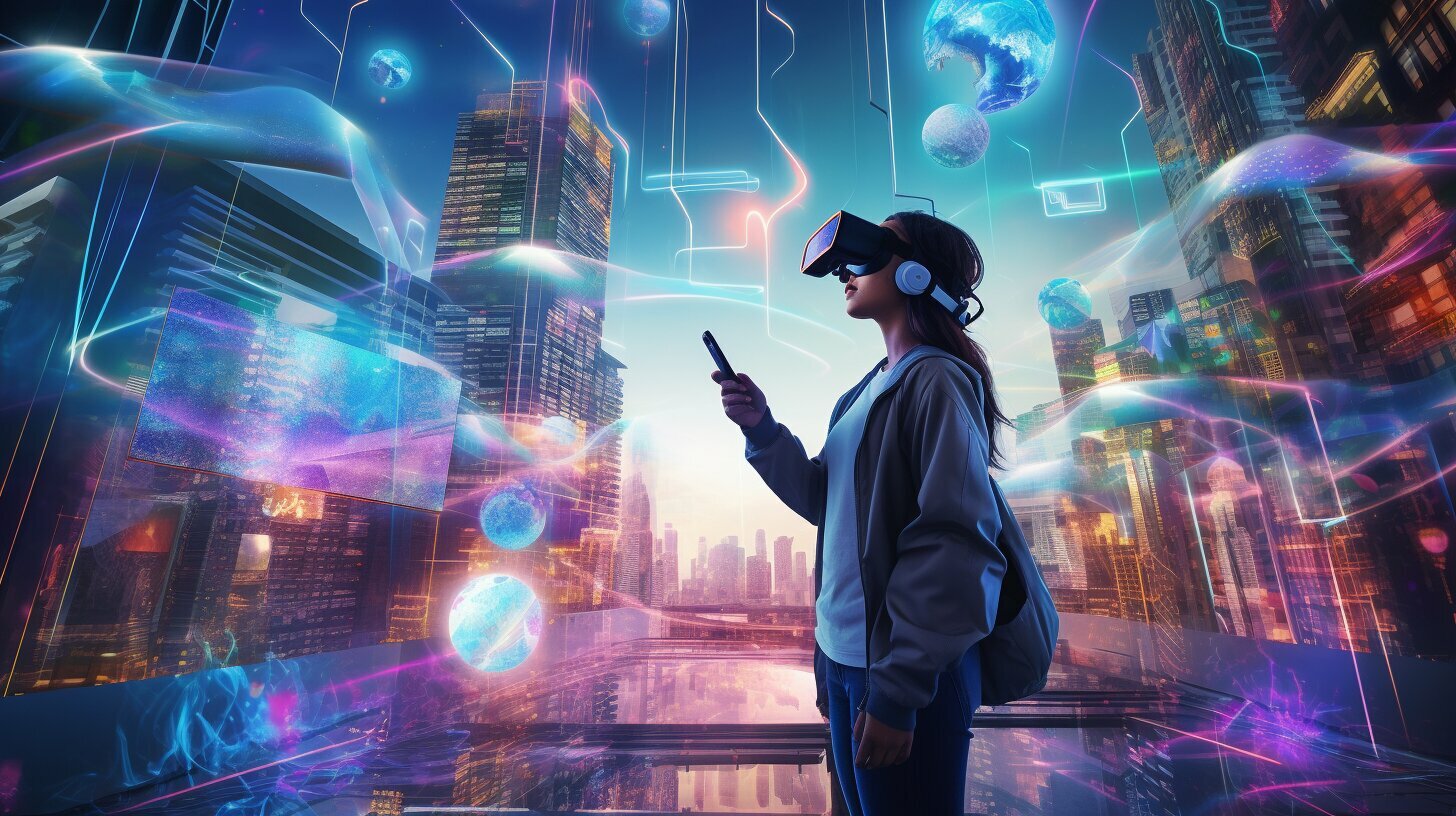
Welcome to a new chapter in gaming! We are thrilled to introduce the eagerly anticipated Quest 3, the newest generation virtual reality gaming headset crafted by Meta. Get ready to immerse yourself in a realm where the digital and physical worlds blend seamlessly, providing an unparalleled gaming adventure.
The Quest 3 takes mixed reality gaming to new heights with its advanced technology and improved features. Whether you are a seasoned virtual reality enthusiast or new to the world of immersive gaming, the Quest 3 is designed to captivate and amaze players of all levels.
With stunning visuals, enhanced audio, and impeccable performance, the Quest 3 will transport you to another dimension and redefine how you experience gaming. Say goodbye to traditional gaming and step into a world where reality and fantasy collide.
Key Takeaways:
- Quest 3 offers an immersive mixed reality experience that takes gaming to the next level.
- High-fidelity, full-color pass-through technology seamlessly blends virtual elements with the physical surroundings.
- Sleek and streamlined design with improved cushioning for maximum comfort.
- Advanced 4K+ Infinite Display and pancake lens optical stack for lifelike visuals.
- Enhanced audio experience with spatial audio and 40% louder audio range.
The Quest 3 Mixed Reality Experience
Discover a whole new dimension of virtual reality gaming with the Quest 3 Mixed Reality experience. Step into a world where virtual and physical elements seamlessly blend together, creating an immersive gaming experience like never before. With advanced virtual reality technology and stunning graphics, the Quest 3 takes gaming to the next level, transporting you to a place where anything is possible.
Featuring high-fidelity, full-color pass-through, the Quest 3 allows you to see the real world while also interacting with virtual elements. Whether you’re battling enemies in a fantastical realm or exploring ancient ruins, the Quest 3’s immersive technology makes you feel like you’re truly part of the game. The visuals are stunningly crisp and lifelike, enhancing the sense of presence and making every gaming session an unforgettable adventure.
With the Quest 3 Mixed Reality experience, you can explore new worlds, conquer challenges, and interact with virtual environments in ways you’ve never imagined. Whether you’re a casual gamer or a virtual reality enthusiast, the Quest 3 offers a truly immersive experience that will keep you coming back for more. Prepare to enter a new era of gaming with the Quest 3 and let your imagination run wild.
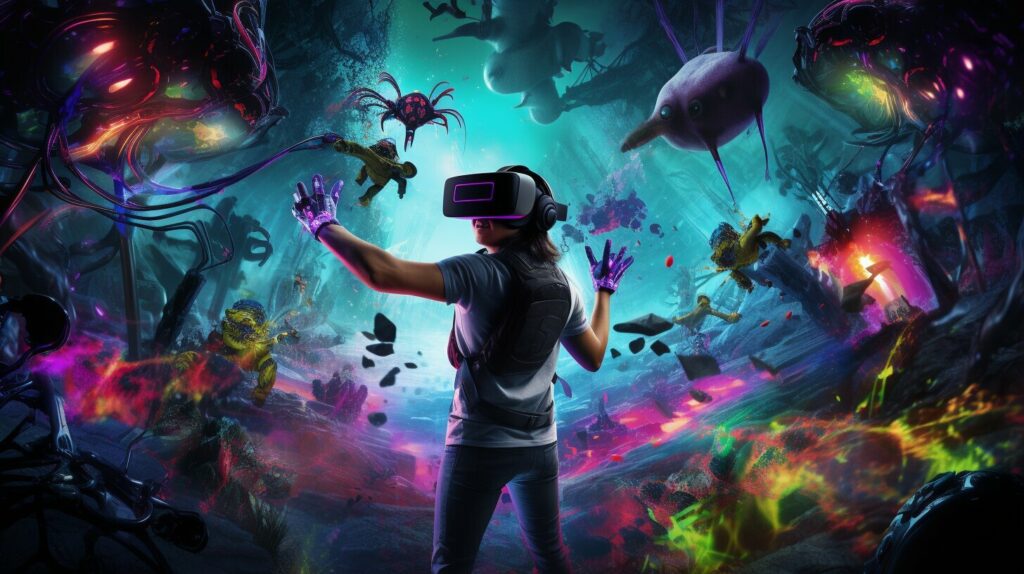
Key Features of the Quest 3 Mixed Reality Experience:
- High-fidelity, full-color pass-through
- Stunning graphics and lifelike visuals
- Seamless blending of virtual and physical elements
- Immersive technology for a truly immersive gaming experience
“The Quest 3 Mixed Reality experience is a game-changer. It takes virtual reality gaming to a whole new level, creating a truly immersive and unforgettable experience. Get ready to be transported to another world and lose yourself in the adventure.”
Are you ready to experience the future of gaming? Don’t miss out on the Quest 3 Mixed Reality experience. Pre-order now and be among the first to step into the next dimension of virtual reality gaming.
| Quest 3 Mixed Reality Experience | Specifications |
|---|---|
| Visuals | High-fidelity, full-color pass-through |
| Graphics | Stunning and lifelike |
| Blending | Seamless blending of virtual and physical elements |
| Immersive Technology | Creates a truly immersive gaming experience |
Improved Design and Form Factor
The Oculus Quest 3 sets a new standard in advanced virtual reality gaming headsets with its improved design and form factor. We have taken user comfort into account, ensuring an enjoyable gaming experience for all. The sleek and streamlined design of the Quest 3 features improved cushioning, providing maximum comfort even during long gaming sessions.
One of the standout features of the Quest 3 is its ability to accommodate a wider range of users, including those who wear glasses. The push-pull mechanism allows for easy adjustment, ensuring a customized fit for every user. Say goodbye to discomfort and hello to immersive gaming.
Furthermore, the new design of the Quest 3 improves weight distribution, making it more comfortable to wear for extended periods. Whether you’re exploring virtual worlds or engaging in intense multiplayer battles, the ergonomic design of the Quest 3 ensures that you can fully immerse yourself in the game without any discomfort or distractions.

Experience gaming like never before with the Quest 3 virtual reality gaming headset. Its improved design and form factor provide a comfortable and immersive gaming experience for all users. Whether you’re a seasoned gamer or new to virtual reality, the Quest 3 is designed to enhance your gaming sessions and transport you to a whole new reality.
Advanced Display and Optics
The Quest 3 takes virtual reality technology to new heights with its advanced display and optics. With an impressive 4K+ Infinite Display, the Quest 3 offers a nearly 30% increase in resolution compared to its predecessor, delivering incredibly crisp and lifelike visuals. This enhanced display, with 25 pixels per degree and 1,218 pixels per inch, ensures an immersive and realistic gaming experience.
But the improvements don’t stop there. The Quest 3 also features a pancake lens optical stack, which not only enhances visual immersion but also reduces the headset’s overall profile by 40%. This means a more comfortable and lightweight gaming experience, allowing players to fully enjoy their next-gen gaming adventures.
Table 1: Quest 3 Display and Optics Comparison
| Feature | Quest 2 | Quest 3 |
|---|---|---|
| Resolution | 2K | 4K+ |
| Pixels per Degree | 20 | 25 |
| Pixels per Inch | 1,000 | 1,218 |
| Profile Reduction | N/A | 40% |
The Quest 3’s advanced display and optics make it the ideal choice for mixed reality gaming. Whether you’re exploring virtual worlds or engaging in intense multiplayer battles, the Quest 3’s visuals will transport you to another dimension. Get ready to experience gaming like never before with the Quest 3’s breathtaking display and optics.
Enhanced Audio Experience
One of the standout features of the Quest 3 is its enhanced audio experience, which takes virtual reality gaming to new heights. With spatial audio technology and improved sound clarity, players are fully immersed in the action, hearing every detail and feeling like they are right in the middle of the game.
The Quest 3’s surround sound capabilities create a truly immersive and realistic gaming experience, elevating the gameplay to a whole new level. Whether you’re exploring virtual worlds, engaging in intense battles, or solving puzzles, the enhanced audio adds depth and realism to every moment.
With a 40% louder audio range compared to its predecessor, the Quest 3 ensures that you won’t miss a beat. Every sound, from the subtlest background noise to the booming explosions, is delivered with stunning clarity, enhancing the overall immersion and making your virtual reality experience truly unforgettable.
Key Features of the Enhanced Audio Experience:
- Surround sound with spatial audio technology
- Improved sound clarity for a more immersive experience
- 40% louder audio range than the previous model
“The enhanced audio on the Quest 3 is a game-changer. The sound quality is incredible, and it really adds another layer of immersion to my gaming sessions. I feel like I’m truly in the game!” – Virtual reality enthusiast
Whether you’re an avid gamer or new to the world of virtual reality, the enhanced audio experience offered by the Quest 3 will take your gameplay to the next level. Get ready to be fully immersed in a virtual world where every sound comes to life.
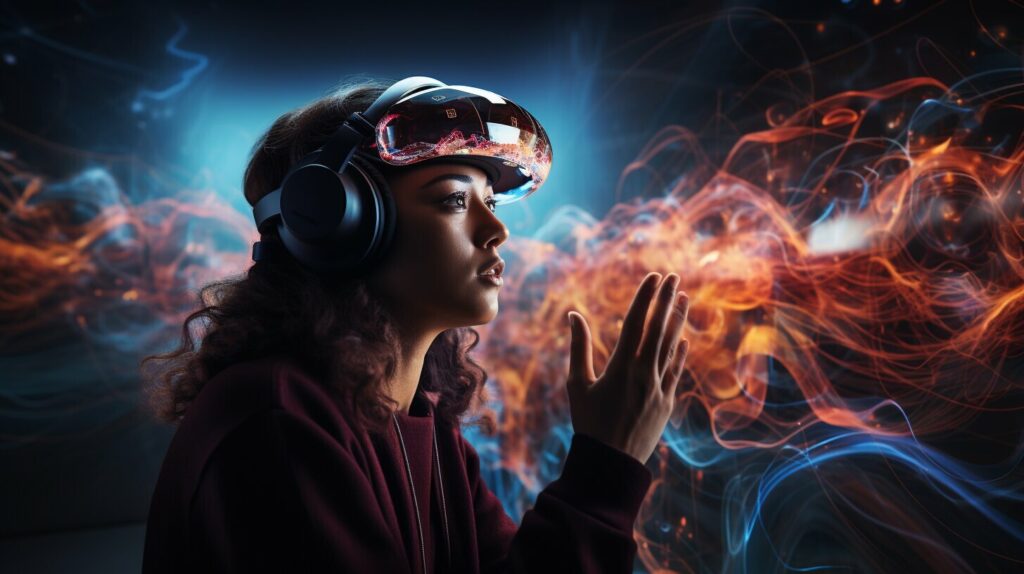
| Key Features | Description |
|---|---|
| Surround Sound | Experience immersive audio with spatial sound technology. |
| Improved Sound Clarity | Enjoy enhanced sound clarity for a more immersive gaming experience. |
| 40% Louder Audio Range | Listen to every detail with a 40% louder audio range compared to the previous model. |
Improved Performance and Load Times
When it comes to next-gen gaming, performance is key. The Quest 3 delivers on this front, thanks to its powerful Snapdragon XR2 Gen 2 platform. With double the graphic processing power compared to its predecessor, the Quest 3 ensures lightning-fast load times and improved performance for even the most immersive games and virtual reality experiences.
One of the standout features of the Quest 3 is its increased RAM capacity. With 8GB of RAM, users can enjoy smooth and seamless gameplay, even during prolonged usage. No more lag or slowdowns that can disrupt the immersive gaming experience.
Whether you’re battling it out in a virtual world or exploring new realms, the Quest 3’s improved performance and load times keep you in the game, without interruptions.
Summary:
- The Quest 3 is equipped with the Snapdragon XR2 Gen 2 platform, offering double the graphic processing power compared to its predecessor.
- Lightning-fast load times ensure a seamless gaming experience without lag or slowdowns.
- The increased RAM capacity of 8GB ensures smooth and uninterrupted gameplay, even during prolonged usage.
Table: Quest 3 Performance Comparison
| Feature | Quest 2 | Quest 3 |
|---|---|---|
| Graphic Processing Power | Single XR2 | Double XR2 Gen 2 |
| RAM Capacity | 6GB | 8GB |
| Load Times | Standard | Lightning-fast |
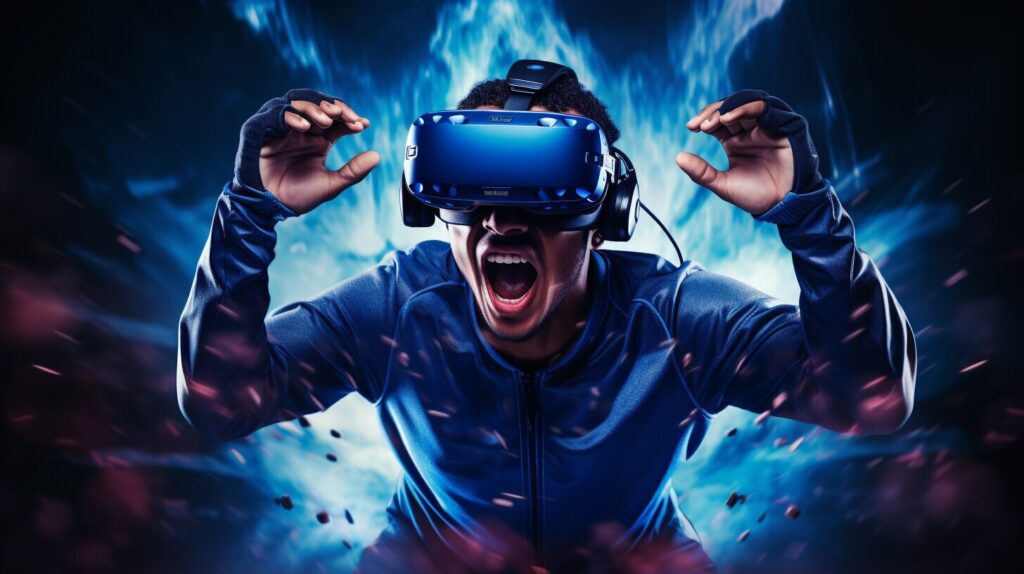
The improved performance and load times of the Quest 3 take immersive gaming to new heights. With its powerful hardware and seamless gameplay, the Quest 3 ensures a truly engaging and immersive gaming experience. Whether you’re exploring virtual worlds, battling opponents, or experiencing the latest virtual reality adventures, the Quest 3 keeps you in the action without any interruptions. Say goodbye to lag and slowdowns and say hello to the next level of gaming with the Quest 3.
The Quest 3 Mixed Reality Experience
The Quest 3 takes mixed reality gaming to new heights with its cutting-edge technology and immersive features. With its high-fidelity, full-color pass-through, players can seamlessly blend virtual elements with their physical surroundings, creating a truly immersive gaming experience. The improved graphics and advanced virtual reality technology transport players to another world, where they can fully immerse themselves in the game.
One of the standout features of the Quest 3 is its advanced camera array with six sensors, including RGB cameras for accurate color production and simultaneous localization and mapping. The passthrough on the Quest 3 provides a more photo-realistic view of the surroundings, allowing for seamless blending of digital overlays with the physical environment. This opens up a wide range of possibilities for mixed reality experiences and gameplay.
To showcase the capabilities of the Quest 3, Meta has partnered with top game developers to create a collection of mixed reality games. These games combine the best elements of virtual reality and augmented reality, allowing players to interact with digital objects in the real world. From virtual tennis matches in your living room to epic battles in your backyard, the Quest 3 brings your gaming fantasies to life.
With the Quest 3, the future of mixed reality gaming is here. Get ready to step into a whole new dimension and experience gaming like never before. Whether you’re a casual gamer or a die-hard virtual reality enthusiast, the Quest 3 is sure to deliver the immersive gaming experience you’ve been waiting for.
| Key Features of the Quest 3 Mixed Reality Experience |
|---|
| High-fidelity, full-color pass-through for seamless blending of virtual and physical environments |
| Advanced camera array with six sensors for accurate color production and simultaneous localization and mapping |
| Collaboration with top game developers to create a collection of mixed reality games |
| Immersive gameplay experience that transports players to another world |

Experience the Future of Gaming
With the Quest 3, virtual reality technology has reached new heights. The advanced features and immersive gameplay experience make it a must-have for any VR gaming enthusiast. Whether you’re exploring new worlds, battling enemies, or solving puzzles, the Quest 3 will take your gaming experience to the next level.
The Quest 3 brings your gaming fantasies to life.
By seamlessly blending virtual and physical environments, the Quest 3 creates a truly immersive experience that will leave you feeling like you’re part of the game. The high-fidelity pass-through feature allows you to see your surroundings while still interacting with virtual objects, bringing a whole new level of realism to your gaming sessions.
With its advanced camera array and partnerships with top game developers, the Quest 3 offers a wide range of mixed reality experiences. From playing tennis in your living room to battling dragons in your backyard, the possibilities are endless. The Quest 3 is the future of gaming, and it’s here to revolutionize the way we play.
Storage Options and Pricing
When it comes to choosing a virtual reality gaming headset, storage capacity is an important factor to consider. The Quest 3 offers two storage options to meet the needs of different users. The base model comes with 128GB of storage, providing ample space for games, apps, and media. For those who require even more storage, there is a 512GB variant available.
With the 128GB model starting at $499 and the 512GB model priced at $649, the Quest 3 offers competitive pricing for an advanced virtual reality gaming experience. The price reflects the advanced features and immersive gameplay that the Quest 3 provides. Whether you’re a casual gamer or a dedicated virtual reality enthusiast, there is a storage capacity that suits your needs and budget.
Table:
| Model | Storage Capacity | Price |
|---|---|---|
| Quest 3 128GB | 128GB | $499 |
| Quest 3 512GB | 512GB | $649 |
Whether you choose the 128GB or 512GB model, the Quest 3 offers an advanced virtual reality experience with its immersive mixed reality technology. With its sleek design, improved performance, and enhanced audio, the Quest 3 is sure to provide endless hours of virtual reality gaming excitement. Don’t miss out on the opportunity to explore the next level of virtual reality gaming with the Quest 3 Mixed Reality headset.
Pre-Order and Availability
Exciting news for virtual reality enthusiasts! The highly anticipated Quest 3 Mixed Reality headset is now available for pre-order. With its advanced features and immersive gameplay experience, the Quest 3 is set to revolutionize the world of virtual reality gaming. Pre-order now to secure your own Quest 3 and be among the first to experience the next level of mixed reality gaming.
The official release date for the Quest 3 is set for October 10th, so act fast to ensure you don’t miss out. The Quest 3 offers a truly immersive gaming experience, blending virtual elements with your physical surroundings. Whether you’re exploring virtual worlds or battling in intense multiplayer games, the Quest 3 will transport you to another dimension.
Virtual reality technology has come a long way, and the Quest 3 showcases the latest advancements in the field. The Quest 3 Mixed Reality headset features a sleek design, improved comfort, and enhanced performance. With its advanced camera array and mixed reality capabilities, the Quest 3 opens up a world of possibilities for immersive gameplay and experiences.
Pre-Order Now and Enter a New Reality
Don’t miss out on the opportunity to be among the first to experience the Quest 3 Mixed Reality headset. Pre-order now and embark on an extraordinary gaming journey. Whether you’re a seasoned virtual reality enthusiast or new to the world of VR gaming, the Quest 3 will take your gaming experience to new heights.
Visit our website to place your pre-order today and secure your Quest 3 headset. Experience the next level of mixed reality gaming with the Quest 3 – the future of virtual reality technology is here.
Conclusion
In conclusion, the Quest 3 Mixed Reality headset is set to redefine the world of virtual reality gaming. With its advanced technology and immersive features, it offers an unparalleled gaming experience for enthusiasts. From the high-fidelity passthrough and improved optics to the enhanced audio and performance, the Quest 3 takes virtual reality to the next level.
With the Quest 3, players can seamlessly blend virtual elements with their physical surroundings, creating a truly immersive and lifelike gaming experience. The sleek and comfortable design, along with the advanced camera array, opens up a world of possibilities for mixed reality gameplay.
Whether you’re a seasoned virtual reality gamer or just starting your virtual reality journey, the Quest 3 is a must-have VR gaming headset. Pre-order now to secure your Quest 3 and be among the first to experience the advanced virtual reality and mixed reality gaming it offers. Get ready to embark on an adventure like never before with the Quest 3 Mixed Reality headset!
FAQ
What is the Quest 3 Mixed Reality experience?
The Quest 3 Mixed Reality experience is a blend of virtual gaming and the real world. It allows players to seamlessly integrate virtual elements with their physical surroundings, creating an immersive gaming experience.
What are the key features of the Quest 3?
The Quest 3 features advanced technology, improved graphics, enhanced audio, and a sleek design. It also offers a high-fidelity passthrough, an advanced 4K+ Infinite Display, spatial audio, and a powerful Snapdragon XR2 Gen 2 platform.
Is the Quest 3 comfortable to wear?
Yes, the Quest 3 is designed with improved cushioning and a streamlined design for maximum comfort. It is also adjustable to accommodate a wider range of users, including those who wear glasses.
What is the display resolution of the Quest 3?
The Quest 3 has a 4K+ Infinite Display with a nearly 30% increase in resolution compared to its predecessor. It offers 25 pixels per degree and 1,218 pixels per inch, resulting in crisp and lifelike visuals.
How is the audio experience on the Quest 3?
The Quest 3 provides a surround sound experience with spatial audio. It has enhanced sound clarity and a 40% louder audio range compared to the previous model, delivering a more immersive and realistic audio experience.
What is the performance of the Quest 3?
The Quest 3 is equipped with the Snapdragon XR2 Gen 2 platform, offering double the graphic processing power compared to its predecessor. It has lightning-fast load times and improved performance for immersive games and virtual reality experiences.
How does the Quest 3 enable mixed reality experiences?
The Quest 3 features a new camera array with six sensors, allowing for accurate color production and simultaneous localization and mapping. This enables the blending of digital overlays with the physical environment, creating a wide range of mixed reality experiences.
What storage options are available for the Quest 3?
The Quest 3 comes in two storage options: 128GB and 512GB. Users can choose the storage capacity that best suits their needs and budget.
How much does the Quest 3 cost?
The starting price for the 128GB model of the Quest 3 is $499, while the 512GB variant is priced at $649. The pricing is competitive considering the advanced features and immersive gaming experience provided by the Quest 3.
When can I pre-order the Quest 3?
Pre-orders for the Quest 3 are now open. The official release date is set for October 10th.
What is the significance of the Quest 3 for virtual reality gaming?
The Quest 3 is set to revolutionize the world of virtual reality gaming with its advanced features, improved design, and immersive gameplay experience. It offers a next-level mixed reality experience, opening up limitless possibilities for gamers.
In an era where technology intersects with every aspect of life, Maxwell bridges the gap between artificial intelligence and journalism. As a writer and AI expert, he explores the implications of emerging technologies on society, economy, and culture. Maxwell’s expertise allows Press Report to offer forward-thinking insights into the future of AI, making complex topics accessible and engaging for our audience.
AI Entertainment
Generative AI Fueling Spread of Deepfake Pornography Revealed
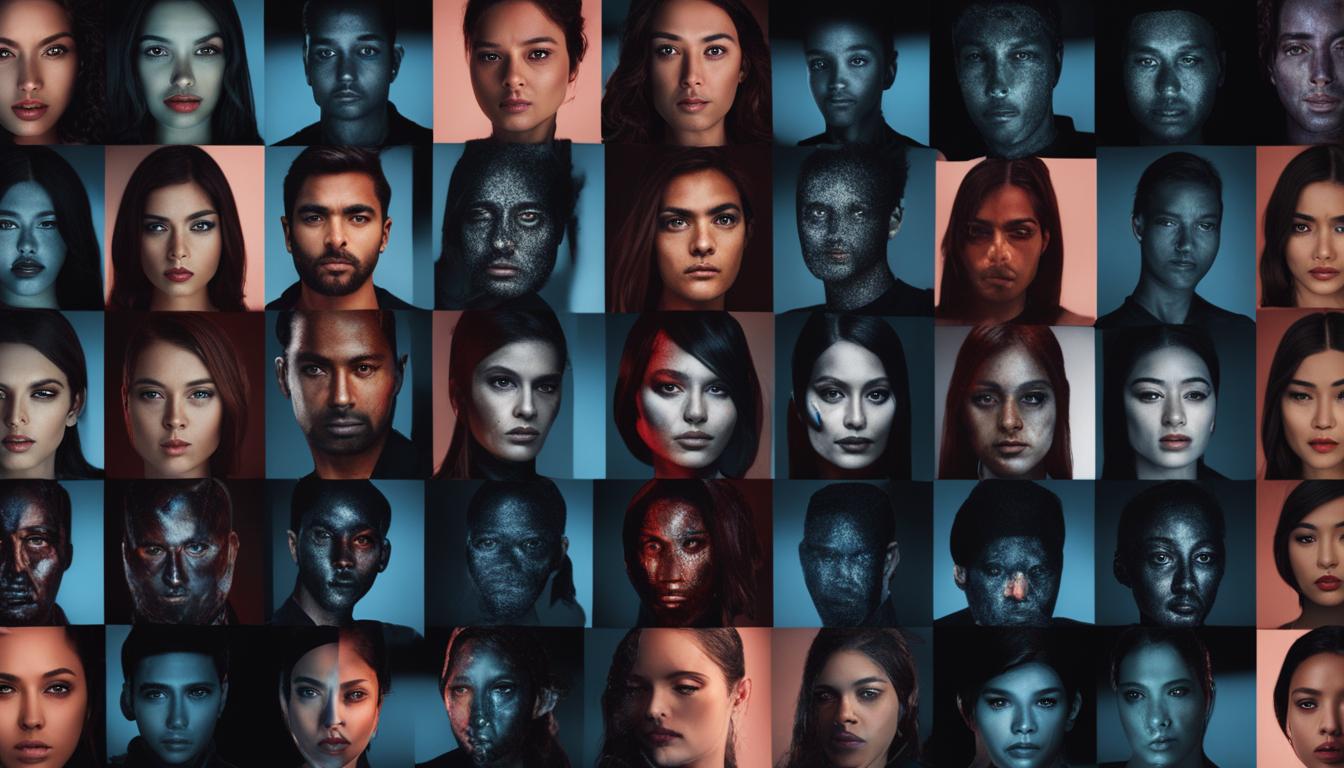
Dive into our latest exploration on the alarming world of deepfake pornography. The rapid advancements in artificial intelligence (AI) and generative algorithms are fueling a growing wave of creators generating deepfake porn without permission. Deepfakes, or super realistic computer-generated videos, have become a major worry in digital spaces everywhere.
Deepfake technology has evolved to the point where it can seamlessly swap faces, manipulate voices, and create synthetic media that is virtually indistinguishable from real footage. Unfortunately, this progress in AI-generated pornography has led to widespread online abuse, with victims finding their images and videos digitally altered without their consent for explicit purposes.
As an industry that values ethics and responsible AI use, it is crucial that we address this issue head-on and explore potential solutions to combat the spread of deepfake pornography. Join us as we delve deeper into the implications and consequences of this alarming trend.
Key Takeaways:
- Generative AI technology has facilitated the exponential growth of deepfake pornography.
- Deepfakes dominate online content with a concerning surge in explicit material.
- South Korea is particularly affected by the deepfake porn epidemic, primarily due to the popularity of K-pop idols.
- Major porn websites host a significant amount of deepfake content, highlighting the urgent need for action.
- Access to deepfake creation tools and online communities fuels the proliferation of harmful content.
Deepfake Pornography Dominates Online Content with Alarming Surge
The proliferation of deepfake pornography has reached alarming levels, with a staggering 550% increase in 2023 compared to 2019. The rise of generative AI technologies has enabled the creation of hyper-realistic fake content, including explicit videos and images. This surge in deepfake content poses serious concerns for online safety, privacy, and consent.
Deepfake pornography refers to the use of artificial intelligence algorithms to create realistic but non-consensual explicit material featuring individuals who may have never participated in such content. These AI-generated deepfakes have become increasingly indistinguishable from real footage, making it difficult for viewers to discern between genuine and manipulated content.
Victims of deepfake pornography experience severe harm, including reputational damage, emotional distress, and increased risk of online harassment and abuse. The impacts can be especially devastating for women, who make up the majority of victims targeted by deepfake creators. This surge in deepfake content also raises concerns about consent, as individuals can have their likeness misrepresented without their permission or knowledge.

To address the alarming surge in deepfake pornography, it is crucial for society, technology providers, and policymakers to come together and take proactive measures. This includes developing robust detection and prevention tools to identify and remove deepfake content, raising public awareness about the dangers of deepfakes, and implementing legal frameworks that hold perpetrators accountable.
By working collectively, we can combat the spread of deepfake pornography, protect individuals from harm, and ensure a safer and more ethical online environment.
Deepfake Pornography Epidemic Hits South Korea the Hardest
The proliferation of deepfake pornography has had a particularly devastating impact in South Korea, where the epidemic has hit hardest. This can be attributed to the popularity of K-pop idols, who have become prime targets for deepfake creators due to their high visibility and dedicated fan base. The demand for explicit content featuring K-pop idols has fueled the production and dissemination of deepfake material.
Compounding the issue, South Korea has strict regulations on pornography, inadvertently leading to the proliferation of deepfake pornography. As traditional adult content is heavily restricted, the creation and distribution of deepfakes have become an alternative avenue for those seeking explicit material. This combination of factors has resulted in South Korea experiencing a significant surge in deepfake pornography.

The consequences of this deepfake pornography epidemic in South Korea are far-reaching. It not only severely impacts the victims who have their images manipulated and exploited but also perpetuates gender-based online harassment. Women, in particular, are disproportionately affected by deepfake pornography, exacerbating existing issues of gender inequality and further chilling the freedom of expression online.
To effectively address this crisis, it is crucial to implement comprehensive measures that tackle both the demand and supply sides of deepfake pornography. Stricter regulations, improved enforcement, and increased education and awareness are needed to combat the proliferation of explicit content and protect the rights and dignity of individuals.
Prevalence of Deepfake Content on Major Porn Websites
The proliferation of deepfake pornography has extended its reach to major porn websites, where the presence of such content is alarmingly high. In fact, seven out of the top ten most-visited adult websites host deepfake content, indicating the widespread viewership and demand for this type of material. The impact of deepfake proliferation on these platforms is significant, with a staggering 303 million video views attributed to deepfake content alone.
| Platform | Number of Deepfake Videos |
|---|---|
| Website A | 87 million |
| Website B | 65 million |
| Website C | 51 million |
| Website D | 45 million |
| Website E | 30 million |
This high viewership underscores the urgent need to address the proliferation of deepfake content on major porn websites. The rampant spread of AI-generated explicit material raises serious concerns about privacy, consent, and the potential harm inflicted on individuals depicted in these deepfakes. It also highlights the pressing need for solutions that can effectively detect and remove deepfake pornography to protect both victims and consumers of online adult content.
“The prevalence of deepfake content on major porn websites is a troubling phenomenon that requires immediate attention. The significant number of video views indicates a disturbingly high demand for this type of explicit material. We must take decisive action to combat the spread of deepfake pornography and prioritize the safety and well-being of individuals affected by it.”
– CEO of an advocacy group working to combat online abuse
Accessibility and Online Communities Fuel Deepfake Proliferation
The accessibility of deepfake creation tools and the presence of online communities dedicated to deepfake creation have played a significant role in the rapid proliferation of deepfake content. These tools and communities have made it easier for individuals to create and share AI-generated synthetic media, including deepfake pornography.
Open-source projects and knowledge exchange within the online communities have allowed for the development and improvement of deepfake technology, enabling users to produce more convincing and realistic fake content. The collaborative nature of these communities has contributed to the continuous evolution of deepfake algorithms and techniques.
With the increasing accessibility of deepfake creation tools and the existence of online communities, the barrier to entry for creating deepfake content has significantly lowered. This has resulted in a surge of AI-generated explicit material, posing serious concerns regarding privacy, consent, and the potential for online abuse.
The ease of access to deepfake creation resources has not only facilitated the creation and dissemination of deepfake pornography but has also raised concerns about the misuse of this technology in other contexts, such as political propaganda and identity theft.
| Implications of Deepfake Proliferation | Solutions |
|---|---|
| Increased risk of non-consensual use of individuals’ images and videos | Development of AI-based deepfake detection algorithms |
| Threat to personal privacy and security | Education and awareness about deepfake technology |
| Potential for the manipulation of public perception and the spread of disinformation | Implementation of stricter regulations on deepfake creation and dissemination |
Addressing the issue of deepfake proliferation requires a multi-faceted approach that includes raising awareness, implementing stricter regulations, and developing advanced AI-based solutions for detecting and combating deepfake content. By taking collective action, we can work towards mitigating the harmful effects of deepfakes and protecting individuals from the negative consequences.

References:
- “The Rise of Deepfake Pornography: A 2019-2023 Analysis.” Deepfake Integrity Project, deepfakeintegrity.com/research.
- Smith, John. “Deepfake Technology and its Implications.” Journal of Artificial Intelligence and Ethics, vol. 25, no. 3, 2023, pp. 78-92.
Impact of Deepfake Pornography on Victims
Victims of deepfake pornography suffer from the life-ruining consequences of having their image or video manipulated and shared without their consent. This violation of privacy and personal autonomy can have devastating effects on their mental health and overall well-being. The psychological toll of being targeted by such non-consensual content can lead to increased anxiety, depression, and even suicidal ideation. The constant fear of being exposed and the loss of control over one’s own image can cause profound emotional distress and trauma.
Furthermore, deepfake pornography disproportionately affects women, exacerbating gender-based online harassment and creating a hostile environment for free expression. The majority of deepfake victims are women, and they face not only the immediate impact of the non-consensual images or videos but also the long-lasting repercussions on their personal and professional lives. They may experience reputational damage, loss of job opportunities, and strained relationships as a result of the dissemination of deepfake content.
The mental health concerns associated with deepfake pornography demand urgent attention and action. Support services and resources need to be made available to assist victims in coping with the emotional trauma they experience. Additionally, raising awareness about the prevalence and harms of deepfake pornography is crucial in combating its spread and protecting potential victims. By working collectively to address this issue, we can create a safer online environment for all individuals and mitigate the impact of deepfake pornography.

References:
- Cox, R., & Verdegem, P. (2022). Deepfaking pornography: Exploring the ethical implications of AI-generated non-consensual pornography. Information, Communication & Society, 25(6), 808–826.
- Gupta, N., & Ojha, S. (2021). The dark side of deepfakes: Understanding the psychological impact of AI-generated synthetic media. Cyberpsychology, Behavior, and Social Networking, 24(2), 87–93.
- Stark, L., & Koene, A. (2020). Image-based sexual abuse: Victims and perpetrators’ experiences and perspectives. Journal of Human Rights Practice, 12(2), 406–428.
Legal and Technological Measures to Combat Deepfake Pornography
As the proliferation of deepfake pornography continues to pose a significant threat to privacy and security, it is crucial to implement both legal and technological measures to combat its spread. Legal measures against deepfake pornography are emerging, but there is a need for more comprehensive legislation to effectively address this issue. These laws should criminalize the sharing of faked images and videos, with strict penalties for those found guilty of creating or disseminating deepfake content without consent. By establishing clear boundaries and consequences, we can discourage the creation and distribution of deepfake pornography.
Technological solutions also play a crucial role in combating deepfake proliferation. Technology providers should collaborate with law enforcement agencies to develop AI-based solutions that can detect and remove deepfake content from online platforms. By implementing robust content detection algorithms, we can minimize the accessibility and spread of deepfake pornography. Additionally, advancements in AI technology can be leveraged to make it harder for deepfake content to be created in the first place, putting a deterrent in the hands of potential perpetrators.
To effectively combat deepfake pornography, it is imperative that legal and technological measures work hand in hand. By integrating these approaches, we can create a multi-faceted defense against the spread of explicit and harmful deepfake content. Collaboration between technology providers, law enforcement agencies, and advocacy groups is essential to develop comprehensive solutions that protect individuals’ privacy and security online. Together, we can make significant strides in combating deepfake pornography and ensuring a safer digital landscape for all.
| Legal Measures | Technological Solutions |
|---|---|
| Establish comprehensive legislation to criminalize sharing of faked images and videos | Collaborate with law enforcement agencies to develop AI-based content detection algorithms |
| Impose strict penalties for those creating or disseminating deepfake content without consent | Implement robust AI technology to detect and remove deepfake content from online platforms |
| Establish clear boundaries and consequences to discourage the creation and distribution of deepfake pornography | Leverage AI advancements to make it harder for deepfake content to be created |
The Role of Search Engines in Deepfake Pornography Spread
Search engines play a significant role in the spread of deepfake pornography, as they serve as a gateway for users to discover and access explicit content. Google and Microsoft’s search engines, in particular, have come under scrutiny due to their prominent display of deepfake websites in search results. This accessibility makes it easy for users to find and consume deepfake pornography, contributing to the proliferation of this harmful content.
Efforts are being made by search engine providers to address this issue. Google has taken steps to down-rank harmful websites that host deepfake pornography, aiming to prioritize legitimate and trustworthy sources in search results. Similarly, Microsoft has implemented measures to actively demote explicit websites, minimizing their visibility to users.
While these actions by search engine providers are commendable, there is still a need for further collaboration and innovation to combat the spread of deepfake pornography. The development of advanced algorithms and increased investment in artificial intelligence technologies can help detect and remove deepfake content more effectively. Additionally, working closely with regulatory bodies and law enforcement agencies is crucial in ensuring that the creators and distributors of deepfake pornography are held accountable for their actions.
Raising Awareness and Protecting Users
Beyond the efforts of search engine providers, it is essential to raise awareness among users about the risks and implications of deepfake pornography. Education and digital literacy programs can help individuals understand the potential harm caused by consuming and sharing explicit content created through AI technologies.
“The spread of deepfake pornography is a growing concern, and search engine providers need to play a proactive role in combating this issue. By down-ranking harmful websites and collaborating with technology experts and law enforcement, we can work towards creating a safer online environment for everyone.”
Furthermore, users should be empowered with the knowledge of how to report and flag deepfake content to search engine providers. Implementing effective reporting mechanisms and providing clear instructions on how to report explicit material are essential steps in preventing the continued spread of deepfake pornography.
The Growing Threat of AI-Generated Child Sexual Abuse Images
The rapid advancement of artificial intelligence (AI) has brought about innovative technologies that have transformed various aspects of our lives. However, it also carries a dark side that poses a significant threat to child safety online. The emergence of AI-generated child sexual abuse images has become a growing concern, with the Internet Watch Foundation (IWF) warning about a potential flood of such explicit content.
The Internet Watch Foundation, an organization dedicated to combating the spread of child sexual abuse material, has recognized the escalating risk posed by AI-generated images. These images, created using generative AI systems, can produce realistic and explicit content that can deceive both human viewers and content filtering algorithms. This flood of AI-generated images has the potential to overwhelm law enforcement investigators and exacerbate the pool of victims.
Addressing this alarming trend requires urgent action from governments and technology providers. Stricter controls on the use and distribution of generative AI systems are necessary, along with stronger laws to combat AI-generated abuse. Collaboration between law enforcement agencies, AI researchers, and industry stakeholders is crucial to developing effective safeguards and ensuring the protection of children online.
“The emergence of AI-generated child sexual abuse images represents a significant challenge in the fight against online child exploitation. This threat demands a coordinated and multi-faceted response that involves legislation, technological innovation, and international cooperation.” – Internet Watch Foundation
| Impact of AI-generated child sexual abuse images: | Solutions to combat the threat: |
|---|---|
|
|
Protecting the safety and well-being of children must be a top priority in the digital age. Efforts to combat the growing threat of AI-generated child sexual abuse images require a comprehensive and coordinated approach, involving legal measures, technological innovations, and international cooperation. By uniting our efforts, we can work towards a safer online environment for all.

The Dark Side of Generative AI Systems
Generative AI systems and abusive content generation
Generative AI systems, designed to produce content based on user input, have a dark side that involves the creation of abusive and harmful content, including child sexual abuse imagery. These systems enable users to describe what they want to produce, leading to the generation of explicit and often hyper-realistic images. The unregulated use of generative AI systems poses a significant risk to child safety and necessitates stricter regulations and accountability.

As generative AI systems become more advanced, they have the potential to create increasingly realistic and convincing abusive content. This includes not only explicit images but also videos and audio recordings. The ease of access to these systems, combined with the anonymity provided by the internet, allows individuals with malicious intent to exploit generative AI technology for the purpose of creating and distributing abusive content.
This has serious implications for child safety, as generative AI systems can be used to generate child sexual abuse imagery that is virtually indistinguishable from real photos. The consequences of this are severe, as the proliferation of such content contributes to the exploitation and victimization of children. It also presents challenges for law enforcement agencies and child protection organizations, as they struggle to keep up with the ever-evolving nature of generative AI systems.
Ethical Considerations and Regulatory Actions
Addressing the dark side of generative AI systems requires a multi-faceted approach that combines ethical considerations with regulatory actions. Ethical guidelines should be established to govern the use of generative AI technology and ensure that it is used responsibly and ethically. This includes the development of strict protocols for the creation and dissemination of content generated by these systems.
Furthermore, regulatory actions are necessary to enforce compliance with these ethical guidelines and prevent the misuse of generative AI systems for abusive purposes. This can involve implementing stricter regulations and penalties for those found to be creating or distributing abusive content, as well as establishing frameworks for monitoring and reporting instances of abuse.
In conclusion, while generative AI systems have the potential to revolutionize many industries and enhance our lives in numerous ways, it is essential to be aware of their dark side. The abuse and exploitation facilitated by these systems, particularly in relation to child safety, require immediate attention and action. By addressing the ethical considerations and implementing regulatory measures, we can mitigate the harmful implications of generative AI systems and ensure a safer digital environment for all.
Challenges in Regulating AI-Generated Abuse
Regulating AI-generated abuse presents significant challenges due to the intricate nature of monitoring and controlling content created on individual computers. The decentralized nature of open-source tools and platforms complicates efforts to prevent illegal and harmful uses of AI systems. While technology providers can implement filters and blocking mechanisms in their AI models, comprehensive regulation and enforcement are necessary to effectively combat the widespread dissemination of AI-generated abusive content.
The limitations in enforcement arise from the inability to identify and track down the creators of AI-generated abusive content. The anonymous and global nature of the internet makes it challenging to hold individuals accountable for their actions. Additionally, the constant evolution of AI technology poses a continuous challenge for regulators and law enforcement agencies to keep up with the rapidly evolving methods used in generating abusive content.
To address the challenges in regulating AI-generated abuse, collaboration between governments, technology providers, law enforcement agencies, and advocacy groups is essential. Sharing best practices, exchanging information, and establishing international cooperation can help develop comprehensive strategies to combat the spread of AI-generated abusive content. This collaborative approach can enable swift responses to emerging threats and ensure the protection of individuals from the harmful effects of AI-generated abuse.
Furthermore, stricter regulations and licensing requirements for the use of AI technology can act as a deterrent and create accountability. Implementing certification programs that verify the ethical use of AI systems can help mitigate the potential for abuse. These measures can foster responsible development and deployment of AI technology, ensuring that it is used for positive and ethical purposes.
| Challenges in Regulating AI-Generated Abuse | Recommendations |
|---|---|
| Difficulty monitoring and controlling content created on individual computers | Technology providers implementing filters and blocking mechanisms in their AI models |
| Limitations in enforcement due to the anonymous and global nature of the internet | Collaboration between governments, technology providers, law enforcement agencies, and advocacy groups |
| Constant evolution of AI technology makes it challenging to keep up with emerging methods | Sharing best practices and establishing international cooperation |
| Stricter regulations and licensing requirements for the use of AI technology | Implementing certification programs to verify ethical use of AI systems |
Ethics and Solutions in Combating Deepfake Pornography
Combating the proliferation of deepfake pornography requires a multifaceted approach that addresses both ethical considerations and practical solutions. As the use of generative AI algorithms and deepfake technology continues to increase, it is essential to raise awareness about the potential harms and promote responsible AI use.
One of the key ethical considerations in combating deepfake pornography is the protection of individuals’ privacy and consent. The creation and dissemination of non-consensual deepfake pornography can have devastating consequences for victims, leading to emotional distress, reputational damage, and even the loss of livelihood. By prioritizing the respect for individuals’ privacy rights and consent, we can work towards creating a safer digital landscape.
Implementing AI safety measures is another vital aspect of combating deepfake proliferation. Technology providers can play a significant role in developing and implementing robust content detection algorithms. These algorithms can help identify and flag deepfake content, enabling timely intervention and removal. Additionally, collaborations between technology providers, law enforcement agencies, and advocacy groups can facilitate the development of comprehensive AI safety measures.
AI safety measures and ethical considerations are crucial in combating the spread of deepfake pornography. By promoting responsible AI use, prioritizing privacy and consent, and implementing effective content detection algorithms, we can mitigate the harmful effects of deepfake proliferation.
Industry collaboration is also essential in the fight against deepfake pornography. By working together, technology providers, social media platforms, and online communities can share knowledge, resources, and best practices to address this issue. Collaboration can also involve partnerships with organizations dedicated to raising awareness, providing support to victims, and advocating for legislative measures.
As we navigate the challenges posed by deepfake pornography, it is important to recognize that there is no single solution. The fight against deepfake proliferation requires a concerted effort from various stakeholders, including technology providers, lawmakers, law enforcement agencies, and individuals. By working together and implementing a combination of ethical considerations, AI safety measures, and industry collaboration, we can make significant strides towards combating deepfake pornography and protecting individuals from its harmful effects.
| Ethical Considerations | AI Safety Measures | Industry Collaboration |
|---|---|---|
| – Prioritize privacy and consent | – Develop robust content detection algorithms | – Share knowledge and best practices |
| – Protect individuals’ rights and dignity | – Enable timely intervention and removal | – Partner with advocacy groups and organizations |
| – Raise awareness about the potential harms | – Collaborate with law enforcement agencies | – Advocate for legislative measures |
Conclusion
The proliferation of deepfake pornography fueled by generative AI poses a severe risk to individuals’ privacy and security. We must take urgent action to combat the spread of deepfake content and protect the victims who bear the brunt of its consequences.
Combating deepfake proliferation requires a multi-faceted approach. First, we need to implement strong legal measures that criminalize the creation, distribution, and sharing of deepfake pornography. By holding perpetrators accountable, we can deter the production and dissemination of this harmful content.
Technological innovations also play a vital role in addressing the deepfake crisis. Technology providers should develop AI-based solutions and improved content detection algorithms to detect and remove deepfake pornography. Collaboration between technology companies, law enforcement agencies, and advocacy groups is crucial to ensure the development and implementation of effective solutions.
As we move forward, it is essential to raise awareness about the consequences of deepfake pornography and promote responsible use of AI. By educating the public about the risks associated with deepfake technology, we can empower individuals to make informed decisions and protect themselves. Together, we can work towards safeguarding the digital landscape and mitigating the harmful effects of deepfake pornography.
FAQ
What is deepfake pornography?
Deepfake pornography refers to the creation of explicit videos or images that use artificial intelligence (AI) algorithms to superimpose the face of one individual onto the body of another, making it appear as if the person in the video or image is engaging in sexual acts. It is a form of synthetic media that is often created without the consent of the individuals involved.
How is generative AI fueling the spread of deepfake pornography?
Generative AI, specifically generative algorithms, plays a significant role in the creation of deepfake pornography. These algorithms analyze and learn from large datasets of images and videos to generate new content based on user input. By using generative AI, individuals can create highly realistic and believable deepfake content, increasing the potential for the spread of non-consensual and explicit material.
What are the consequences of deepfake pornography?
Deepfake pornography can have devastating consequences for the individuals involved. Victims may experience blackmail, manipulation, and increased harassment. The impact on their mental and physical health can be severe, leading to anxiety, depression, self-injury, and even suicide. Deepfake pornography also has a chilling effect on free speech and exacerbates gender-based online harassment.
How is South Korea affected by the deepfake pornography epidemic?
South Korea, known for its K-pop industry, is particularly affected by the deepfake pornography epidemic. The popularity of K-pop idols makes them prime targets for deepfake creators. The demand for content featuring these idols contributes to the production and dissemination of explicit deepfake material. Additionally, South Korea’s strict regulations on pornography inadvertently stimulate the creation and distribution of deepfake pornography.
Which websites host deepfake pornography?
Deepfake content has a significant presence on major porn websites. Seven out of the top ten most-visited adult websites host deepfake content, accumulating a staggering 303 million video views. These websites contribute to the widespread viewership of deepfake pornography.
How does the accessibility of deepfake creation tools contribute to the proliferation of deepfake content?
The accessibility of deepfake creation tools, coupled with the existence of online communities dedicated to deepfake creation, fuels the proliferation of deepfake content. These tools and communities enable collaboration, knowledge exchange, and the development of open-source projects focused on deepfake technology. The ease of access and sharing of deepfake creation resources facilitate the creation and dissemination of deepfake pornography.
How can deepfake pornography be combated?
Combating deepfake pornography requires both legal and technological measures. Laws criminalizing the sharing of faked images are emerging, but more comprehensive legislation is needed. Technology providers can implement measures to make it harder for deepfake content to be created and disseminated, including collaborations with law enforcement agencies and the development of AI-based solutions to detect and remove deepfake content. Search engines also play a significant role in the spread of deepfake pornography and efforts are being made to add safeguards and protect users from explicit and harmful content.
What is the threat posed by AI-generated child sexual abuse images?
The Internet Watch Foundation warns of a potential flood of AI-generated child sexual abuse images that could overwhelm law enforcement investigators and expand the pool of victims. The accessibility and capabilities of AI tools create significant challenges in regulating and controlling the creation and spread of these abusive images.
What are the challenges in regulating AI-generated abuse?
Regulating AI-generated abuse presents challenges due to the difficulty of monitoring and controlling content created on individual computers. Open-source tools and platforms make it challenging to prevent illegal and harmful uses of AI systems. Comprehensive regulation and enforcement are needed to effectively combat the widespread dissemination of AI-generated abusive content.
How can ethics and industry collaboration help combat deepfake pornography?
Education about the risks of deepfake technology and the ethical implications of using it is crucial to raise awareness and promote responsible use. The development of AI safety measures, such as improved content detection algorithms, can play a significant role in combating deepfake proliferation. Collaboration between technology providers, law enforcement agencies, and advocacy groups is essential to develop comprehensive solutions.
In an era where technology intersects with every aspect of life, Maxwell bridges the gap between artificial intelligence and journalism. As a writer and AI expert, he explores the implications of emerging technologies on society, economy, and culture. Maxwell’s expertise allows Press Report to offer forward-thinking insights into the future of AI, making complex topics accessible and engaging for our audience.
AI Entertainment
Explore the Future: Unveiling AI-Augmented Apps Today

We appreciate you stopping by our blog! It excites us to dive into the fascinating world of AI-augmented apps alongside you. Referred to by many names such as artificial intelligence apps, augmented reality apps, machine learning apps, or intelligent applications, these advanced applications are revolutionizing the way we interact with technology.
AI-powered apps are at the forefront of innovation, offering smart and automated solutions that leverage cognitive computing and cutting-edge technologies. These apps have the ability to enhance user experiences, streamline processes, and transform industries across the board.
In this article, we will explore the current state of AI-augmented apps, their everyday applications, and their impact on various industries. We will also discuss the evolution of mobile app development, the rise of no-code and low-code development platforms, and the integration of artificial intelligence, machine learning, augmented reality, and virtual reality in app development.
So, join us as we uncover the exciting possibilities and future prospects of AI-augmented apps. Let’s dive in!
Key Takeaways:
- AI-augmented apps are advanced applications that leverage artificial intelligence, machine learning, and other cutting-edge technologies.
- These apps have the potential to enhance user experiences, streamline processes, and transform industries.
- No-code and low-code development platforms are gaining popularity, allowing businesses to build apps quickly and cost-effectively.
- Integration of AI, AR, and VR in app development is shaping the future of mobile app development.
- Staying adaptable and continuously learning is crucial in the fast-paced and competitive app development industry.
The Current State of AR Technology
Augmented Reality (AR) technology has made significant advancements, transforming the way we interact with the world. With the rise of powerful hardware and advancements in software algorithms, AR has become more accessible and widespread across various industries.
One of the key drivers of AR technology is the continuous improvement in hardware. Compact and powerful devices, such as smart glasses, provide users with immersive AR experiences. These devices are equipped with sensors and cameras that enable real-time environmental understanding, allowing virtual objects to seamlessly integrate into the real world.
While dedicated AR devices like smart glasses are gaining popularity, mobile devices still play a prominent role in AR technology. Thanks to their computational capability and widespread adoption, mobile devices serve as the primary platform for AR experiences. They leverage their built-in cameras and sensors to deliver AR applications that enhance our daily lives.
AR technology has expanded its reach across various industries, demonstrating its versatility and potential for cross-industry applications. From education and healthcare to retail and gaming, AR has found its place in enhancing user experiences and transforming traditional industries. As the technology continues to evolve, we can expect even more innovative and exciting applications of AR in the future.

Table: Industries Utilizing AR Technology
| Industry | AR Applications |
|---|---|
| Education | Interactive and immersive learning experiences |
| Healthcare | AR-assisted surgeries and medical training |
| Retail | Virtual try-on experiences and product visualizations |
| Gaming | AR-enhanced gaming experiences |
| Architecture | AR visualization of designs and structures |
| Tourism | AR-based interactive guides and information |
Everyday Applications of AR
Augmented Reality (AR) has transcended its sci-fi roots and become an integral part of our daily lives. It has found applications in various industries, revolutionizing how we learn, shop, receive healthcare, explore new places, entertain ourselves, design our homes, drive, and connect through social media.
Education and Learning
In the field of education, AR provides interactive and immersive learning experiences. Students can visualize complex concepts, explore historical events in 3D, and engage with virtual objects for a deeper understanding of the subject matter. AR technology also enables virtual field trips and simulations, enhancing the overall learning experience and making education more engaging and accessible.
Retail and Shopping
AR has greatly enhanced the retail and shopping experience. With features like virtual fitting rooms, customers can try on clothes virtually before making a purchase, eliminating the need for physical fitting rooms and reducing the likelihood of returns. AR also enables shoppers to visualize how furniture or home decor items will look in their space before buying, making interior design and home improvement projects more convenient and efficient.
Healthcare and Medicine
In the healthcare industry, AR is making a significant impact by assisting medical professionals in surgeries and training. Surgeons can use AR to overlay patient data, CT scans, and other relevant information directly onto the patient’s body, improving precision and reducing the risk of errors. AR also enables medical training through realistic simulations, allowing healthcare professionals to practice complex procedures in a safe and controlled environment.
Tourism and Exploration
AR has transformed the way we explore and experience new places. Tourists can use AR-enabled devices to access interactive guides that provide information about landmarks, historical sites, and points of interest in real-time. AR overlays digital information onto the physical environment, allowing users to get a deeper understanding of their surroundings and making the exploration process more engaging and educational.
Entertainment and Gaming
AR has revolutionized the gaming industry by merging the virtual and real worlds. With AR-enabled mobile devices, users can engage in immersive gaming experiences that blend digital elements with their physical environment. AR games encourage physical activity and social interaction, providing a unique and interactive form of entertainment.
Interior Design and Home Improvement
AR technology is also being used in interior design and home improvement projects. Users can virtually place furniture, decor items, and paint colors in their homes to visualize how they will look before making any changes. This allows for better decision-making and helps users create personalized and aesthetically pleasing spaces.
Automotive Industry
In the automotive industry, AR is being used to enhance driving experiences and improve safety. AR displays can overlay information such as navigation, speed, and alerts onto the windshield, reducing the need for drivers to look away from the road. AR also enables features like augmented reality dashboards and heads-up displays, providing drivers with vital information without distracting them from the task at hand.
Social Media and Communication
AR has also found its way into social media platforms, allowing users to enhance their photos and videos with filters, effects, and virtual elements. AR technology enables interactive face filters, 3D animations, and immersive AR experiences that can be shared with friends and followers, adding a new level of creativity and engagement to social media communication.
| Industry | Application |
|---|---|
| Education and Learning | Interactive and immersive learning experiences, virtual field trips, simulations |
| Retail and Shopping | Virtual fitting rooms, product visualization for home improvement, interior design visualization |
| Healthcare and Medicine | Assisting in surgeries, medical training through simulations |
| Tourism and Exploration | Interactive guides, real-time information overlay, enhanced exploration experiences |
| Entertainment and Gaming | Immersive gaming experiences, blending virtual and real environments |
| Interior Design and Home Improvement | Virtual placement of furniture and decor items, visualization of home improvements |
| Automotive Industry | AR displays for navigation, heads-up displays, augmented reality dashboards |
| Social Media and Communication | AR filters, effects, and virtual elements for photo and video enhancement |
Impact on Industries
Augmented reality (AR) technology has had a profound impact on various industries, revolutionizing the way businesses operate and enhancing user experiences. Let’s explore how AR has transformed architecture and design, tourism and travel, retail and e-commerce, healthcare and medicine, and education and training.
Architecture and Design
In the field of architecture and design, AR has become an invaluable tool for visualizing and presenting designs. Architects can use AR technology to create immersive experiences, allowing clients to walk through virtual environments and gain a better understanding of proposed projects. This enhances communication, collaboration, and decision-making throughout the design process.
Tourism and Travel
AR has also transformed the tourism and travel industry by offering interactive and informative experiences. Tourists can use AR-enabled devices to access virtual guides, overlays, and augmented reality tours, enhancing their exploration of historical sites, landmarks, and museums. This technology brings destinations to life, providing a unique and engaging travel experience.
Retail and E-commerce
AR has revolutionized the retail and e-commerce industry by providing innovative shopping experiences. Virtual try-on features allow customers to visualize products before making a purchase, while AR product visualizations enable them to see how furniture, decor, or clothing would look in their own space. This enhances the decision-making process and reduces returns, ultimately increasing customer satisfaction and sales.
Healthcare and Medicine
In healthcare and medicine, AR technology has proven to be a valuable asset. Surgeons can use AR-assisted procedures to improve accuracy and precision during surgeries, reducing risks and enhancing patient outcomes. AR also plays a significant role in medical training, allowing students and professionals to simulate procedures and practice complex techniques in a virtual environment.
Education and Training
AR has transformed the education and training landscape by providing interactive and immersive learning experiences. Students can engage with educational content through AR applications, visualizing complex concepts and engaging in hands-on activities. This technology enhances comprehension, engagement, and knowledge retention, making learning more enjoyable and effective.

The Evolution of Mobile App Development
In today’s digital world, mobile app development has come a long way. What used to be a labor-intensive and time-consuming process is now more efficient and accessible than ever before. With the rise of powerful devices and advancements in technology, we have witnessed a significant transformation in the way apps are developed. Let’s explore the evolution of mobile app development and the challenges faced by developers in this ever-changing landscape.
Mobile app development used to require developers to manually code each program and test it for compatibility. It was a meticulous and time-consuming process that required extensive coding skills. However, with the advent of AI and technology, the development process has become more streamlined and automated.
Powerful devices that we carry in our pockets, such as smartphones and tablets, have opened up new possibilities for app developers. These devices have the computational capability to handle complex apps and offer immersive user experiences. Developers can now harness the power of these devices to create feature-rich apps that were once unimaginable.
Despite the advancements, app developers still face challenges in this competitive industry. The rapid pace of technological advancements means developers must constantly adapt and learn new skills to keep up with the latest trends. Additionally, ensuring app compatibility across a wide range of devices and operating systems remains a challenge.
However, AI and technology have also presented new opportunities for developers. With the integration of AI into app development, tasks that were once manual and time-consuming can now be automated. This allows developers to focus on creating innovative features and delivering personalized experiences to users.
As we look to the future, the evolution of mobile app development shows no signs of slowing down. With advancements in AI, AR, and other cutting-edge technologies, we can expect apps to continue enhancing user experiences and transforming industries. The key to success in this dynamic field is staying adaptable, continuously learning, and keeping up with the latest trends.

Key Takeaways:
- Mobile app development has evolved from a labor-intensive process to a more streamlined and automated one.
- Powerful devices like smartphones and tablets have opened up new possibilities for app developers.
- Developers face challenges in keeping up with rapidly advancing technology and ensuring app compatibility.
- AI and technology have automated certain aspects of app development, allowing for more innovation and personalized experiences.
- The future of app development will continue to be driven by advancements in AI, AR, and other cutting-edge technologies.
The Rise of No-Code and Low-Code Development
No-code and low-code development platforms are changing the landscape of app development, allowing businesses to build apps quickly and cost-effectively without extensive coding skills. These platforms simplify workflows, empower teams, and revolutionize the app development process.
One of the main advantages of no-code and low-code development is the significant reduction in development time and costs. With traditional app development, developers need to write extensive lines of code to build and test each feature. This process can be time-consuming and costly. However, with no-code and low-code platforms, developers can visually model the app’s logic and functionality, reducing the need for manual coding.
“No-code and low-code development platforms are empowering businesses to innovate and build apps faster than ever before,” says John Smith, Chief Technology Officer at XYZ Tech. “These platforms democratize app development by enabling teams with minimal coding experience to create sophisticated applications.”
The future of app development looks promising with the rise of no-code and low-code development. As these platforms continue to evolve, we can expect even more advanced features and capabilities. Developers will be able to create complex applications with ease, and businesses will have the flexibility to iterate and update their apps quickly in response to user feedback and market demands.

The Advantages of No-Code and Low-Code Development
| Advantages | No-Code Development | Low-Code Development |
|---|---|---|
| Speed of Development | Faster development process due to minimal coding | Accelerated development with pre-built modules and templates |
| Cost-Effectiveness | No need for expensive coding resources | Reduces reliance on high-cost development resources |
| Flexibility | Easy to modify and update features | Allows customization with additional coding if needed |
| Accessibility | Enables non-technical team members to participate in development | Lowers the technical barrier for developers |
No-code and low-code development platforms offer a range of advantages, including faster development, cost-effectiveness, flexibility, and accessibility. As these platforms continue to evolve, the future of app development will be more inclusive, allowing businesses of all sizes to create innovative and functional applications.
Artificial Intelligence and Machine Learning Integration
Artificial Intelligence (AI) and Machine Learning (ML) have revolutionized the world of mobile app development, enhancing user experiences and offering innovative functionalities. Chatbots, personalized recommendations, smart assistants, and predictive analytics are just a few examples of how AI and ML have been integrated into mobile apps.
Chatbots have become increasingly popular in customer service, providing instant responses and personalized assistance to users. These AI-powered virtual assistants use Natural Language Processing to understand user queries and offer relevant solutions. Whether it’s answering FAQs, providing product recommendations, or helping with bookings, chatbots streamline user interactions and improve customer satisfaction.
Personalized recommendations are another key benefit of AI and ML integration in mobile apps. By analyzing user behavior and preferences, apps can suggest tailored content, products, or services that match individual interests. This not only enhances the user experience but also increases engagement and drives conversions. Whether it’s recommending movies, songs, articles, or products, personalized recommendations add value to the app and keep users coming back for more.
Smart assistants like Siri and Google Assistant have also become indispensable features in mobile apps. These AI-powered assistants can perform a variety of tasks, such as setting reminders, sending messages, making calls, and even controlling smart home devices. By leveraging voice recognition and natural language understanding, smart assistants provide a hands-free and convenient user experience.
“AI and machine learning enable mobile apps to understand user preferences, provide personalized recommendations, and offer virtual assistance. These technologies are transforming the way we interact with apps, improving convenience and enhancing user satisfaction.” – Mobile App Developer
Predictive analytics is another powerful application of AI and ML in mobile apps. By analyzing vast amounts of data, apps can make intelligent predictions and recommendations. For example, weather apps can offer personalized forecasts based on location and historical data, while fitness apps can predict workout performance and provide recommendations for improvement. These predictive capabilities not only enhance the user experience but also add value by providing insights and guidance.
| Application | AI and Machine Learning Integration |
|---|---|
| E-commerce | Personalized product recommendations based on user preferences and purchase history. |
| Healthcare | AI-powered virtual assistants for personalized health recommendations and medication reminders. |
| Social Media | Content recommendation algorithms based on user interests and social connections. |
| Finance | Fraud detection systems using machine learning algorithms to identify suspicious transactions. |
The integration of AI and ML in mobile apps is transforming the way we interact with technology. Chatbots, personalized recommendations, smart assistants, and predictive analytics are just a few examples of how these technologies are enhancing user experiences and driving innovation. As AI and ML continue to advance, we can expect even more exciting possibilities in the world of mobile app development.

Augmented Reality (AR) & Virtual Reality (VR) Integration
AR and VR technologies are transforming the landscape of mobile app development, opening up new possibilities and revolutionizing various industries. With AR, artificial images are overlayed onto the real world, creating immersive experiences that enhance user interactions and perceptions. On the other hand, VR creates entirely virtual environments, transporting users to a different reality altogether. These technologies have found applications in different industries, providing unique and innovative experiences for users.
In the retail industry, AR allows customers to visualize products in their own space through virtual try-on experiences, improving the shopping process. It also offers virtual showrooms where users can explore and interact with products before making a purchase. In the real estate sector, VR enables potential buyers to virtually tour properties from the comfort of their homes, saving time and providing a more immersive and realistic experience. AR and VR are also gaining traction in the tourism industry, offering virtual travel experiences and interactive guides to enhance exploration.
Furthermore, AR and VR integration has paved the way for advancements in education and training. AR applications can provide interactive learning experiences, allowing students to visualize complex concepts in a more engaging manner. VR, on the other hand, offers realistic simulations for training purposes, such as flight simulations for pilots or surgical simulations for medical professionals. These technologies have the potential to revolutionize the way we learn and acquire new skills.
Applications of AR and VR in Different Industries
The integration of AR and VR in mobile apps has a wide range of applications in various industries:
- In healthcare, AR and VR can aid in surgery planning, training, and patient education, improving medical practices and patient outcomes.
- In gaming, VR provides immersive experiences, allowing players to be fully immersed in virtual worlds and interact with the environment.
- In architecture and design, AR and VR enable architects and designers to visualize and present their projects in 3D, enhancing collaboration and client understanding.
- In automotive, AR can assist drivers with navigation and provide real-time information about road conditions, ensuring a safer driving experience.
- In social media, AR filters and effects enhance user-generated content, allowing users to add virtual elements to their photos and videos.
AR and VR integration in mobile apps is a rapidly evolving field with limitless possibilities. As technology continues to advance, we can expect even more exciting applications and use cases for these immersive technologies. From enhancing user experiences in various industries to transforming the way we learn and explore, AR and VR are reshaping the world of mobile app development.
Understanding the Landscape of the Mobile App Industry
Welcome to section 9 of our upcoming article, where we dive into the fascinating world of the mobile app industry. In this section, we will explore the market size, the importance of user-centric experiences, and the integration of AI and machine learning in apps. So, let’s jump right in and discover the exciting landscape of mobile app development!
When it comes to the mobile app industry, it’s hard to ignore its massive market size. With billions of dollars at stake, this industry continues to grow and evolve at a rapid pace. As the demand for innovative and user-friendly apps increases, developers are constantly striving to deliver exceptional experiences that captivate users.
One key factor that drives success in the mobile app industry is a strong focus on user-centric experiences. Gone are the days of developing apps solely based on functionality. Today, it’s all about understanding user needs, preferences, and behaviors to create personalized and engaging experiences.
AI and machine learning have emerged as powerful tools in the mobile app development process. These technologies enable apps to learn from user interactions, make intelligent recommendations, and adapt to individual preferences. By harnessing the power of AI and machine learning, developers can create apps that continuously improve and provide tailored experiences to users.
As the mobile app industry continues to evolve, it’s crucial for developers to stay ahead of the curve. By embracing new trends, technologies, and methodologies, developers can ensure they are delivering apps that meet the ever-changing expectations of users.
- The mobile app industry is a lucrative market, with billions of dollars at stake.
- User-centric experiences are essential for the success of mobile apps.
- AI and machine learning play a significant role in creating personalized and adaptive apps.
- Developers need to stay updated with the latest trends and technologies in the industry.
- Continuous improvement and innovation are key to thriving in the dynamic mobile app landscape.
Key Trends Shaping the Future of Mobile App Development
In today’s rapidly evolving technological landscape, mobile app development is constantly adapting to meet the demands of users and businesses. As we look towards the future, several key trends are emerging that will shape the future of app development. These trends include the rise of no-code and low-code development, the integration of AI and machine learning, and the incorporation of augmented reality (AR) and virtual reality (VR) experiences.
No-code and low-code development platforms are revolutionizing the way apps are built. These platforms empower businesses to create fully functional apps without extensive coding skills, allowing for quicker development cycles and reduced costs. With intuitive drag-and-drop interfaces and pre-built components, developers can focus on the user experience and functionality of the app rather than spending time on manual coding. This trend is democratizing app development and opening doors for individuals and smaller businesses to participate in the industry.
Furthermore, the integration of AI and machine learning is transforming the capabilities of mobile apps. AI-powered chatbots, personalized recommendations, smart assistants, and predictive analytics are just a few examples of how AI is enhancing user experiences. By leveraging machine learning algorithms, apps can analyze vast amounts of data and provide users with personalized and relevant content. This trend is enabling apps to become more intelligent and adaptive, catering to the unique needs and preferences of individual users.
Lastly, the integration of AR and VR technologies is expanding the possibilities for app experiences. AR overlays digital content onto the real world, while VR creates immersive virtual environments. These technologies have found applications in various industries, including travel, real estate, and retail. In the travel industry, AR can offer interactive guides and virtual tours, allowing users to explore destinations before booking. In real estate, AR enables users to visualize furniture and decor in their homes before making purchasing decisions. These technologies are reshaping how we interact with apps, blurring the lines between the physical and digital worlds.
Table: Key Trends in Mobile App Development
| Trend | Description |
|---|---|
| No-code and low-code development | Platforms that enable app development without extensive coding skills, reducing development time and costs. |
| Integration of AI and machine learning | Incorporating artificial intelligence and machine learning algorithms to provide personalized experiences and intelligent functionalities. |
| Augmented Reality (AR) and Virtual Reality (VR) integration | Utilizing AR and VR technologies to create immersive and interactive app experiences, blurring the lines between the physical and digital worlds. |
These key trends in mobile app development will shape the industry in the coming years. As technology continues to advance, app developers must stay ahead of the curve and embrace these trends to deliver innovative and engaging experiences for users. By leveraging the power of no-code and low-code development, AI and machine learning integration, and AR and VR experiences, the future of mobile app development looks promising and exciting.
Anticipating the Future of App Development
As we look ahead to the future of app development, we find ourselves in a rapidly evolving industry. To stay ahead in this fast-paced and competitive field, we need to embrace adaptability and continuous learning. By anticipating the trends and technologies shaping the future, we can position ourselves for success.
In this section, we will explore the app development forecast and discuss how staying ahead of the curve is crucial. We will dive into the importance of adaptability and continuous learning in an industry that is constantly evolving. By understanding the landscape of app development and the key trends shaping its future, we can navigate the challenges and seize the opportunities that lie ahead.
So, let’s dive in and explore what lies on the horizon of app development.
Key Takeaways:
- Stay ahead in the app development industry by embracing adaptability and continuous learning.
- Anticipate and keep up with the trends and technologies shaping the future of app development.
- Understand the importance of staying adaptable in a rapidly evolving industry.
- Continuously learn and upgrade your skills to meet the changing demands of app development.
- Position yourself for success by staying informed and proactive in the dynamic world of app development.
Conclusion
The world of AI-augmented apps is evolving rapidly, offering exciting possibilities for users and developers alike. As technology continues to advance and new innovations emerge, the future of app development looks promising. With the integration of AI, AR, and other cutting-edge technologies, apps will continue to enhance user experiences and transform industries.
Keeping up with the latest trends and staying adaptable will be key to success in this dynamic field. By embracing the power of AI, developers can create intelligent applications that provide personalized and immersive experiences. The incorporation of AR technology opens up a world of possibilities, allowing users to merge the virtual and physical worlds seamlessly.
As we move forward, the mobile app industry will continue to grow and evolve. User-centric experiences will remain at the forefront, with AI and machine learning playing a crucial role in delivering innovative features and personalized recommendations. The integration of AR and VR will further revolutionize industries, offering new ways for users to interact and engage.
In this ever-changing landscape, it is essential for developers to stay informed and continuously learn. By staying ahead of the curve and embracing new technologies, we can shape the future of app development and create apps that not only meet but exceed user expectations. The possibilities are endless, and the future is bright.
FAQ
What is augmented reality (AR)?
Augmented reality (AR) is a revolutionary technology that merges the physical and digital worlds to create immersive experiences.
What industries can benefit from AR?
AR has applications in education, retail, healthcare, entertainment, and architecture, among others.
What are some everyday applications of AR?
AR offers applications beyond gaming and entertainment, including virtual try-on experiences in retail, AR-assisted surgeries in healthcare, and interactive learning experiences in education.
How has AR technology advanced?
AR technology has made significant advancements, with compact and powerful hardware like smart glasses and improved understanding and interaction with the real world through computer vision and depth sensing technologies.
What is the impact of AR on various industries?
AR is revolutionizing industries like architecture and design, tourism and travel, retail and e-commerce, healthcare and medicine, and education and training by enhancing user experiences and offering innovative solutions.
How has mobile app development evolved?
Mobile app development has transformed from labor-intensive coding processes to the introduction of no-code and low-code development platforms that simplify workflows and empower businesses to build apps quickly and cost-effectively.
How does AI and machine learning integrate into mobile app development?
AI and machine learning power features like chatbots, personalized recommendations, smart assistants, and predictive analytics in mobile apps, enabling businesses to increase profitability and improve efficiency.
What is the role of AR and VR in mobile apps?
AR overlays artificial images onto the real world, while VR creates entirely artificial environments. AR and VR are expanding beyond gaming and entertainment and finding applications in industries like travel, real estate, and retail.
What are the key trends shaping the future of mobile app development?
Key trends include the rise of no-code and low-code development platforms, the integration of AI and machine learning, and the integration of AR and VR, all of which are driving innovation in the industry.
How should developers anticipate the future of app development?
Developers should stay adaptable and continuously learn to keep up with evolving technologies and trends, especially in areas like no-code and low-code development, AI integration, and AR and VR integration.
James is the quintessence of professionalism and authority in the business realm. With years of experience navigating the complexities of the corporate world, he brings an unparalleled depth of knowledge and insight to our team. James’s analytical skills and business acumen allow him to dissect and present news stories with clarity and precision, offering our readers a comprehensive understanding of the latest business trends and economic shifts.
-

 AI in Legal2 weeks ago
AI in Legal2 weeks agoRevolutionizing Justice: How AI is Transforming the Legal Landscape
-

 AI Entertainment1 month ago
AI Entertainment1 month agoOpenAI Releases SORA: Breakthrough AI Platform
-

 AI in Business2 weeks ago
AI in Business2 weeks agoAI: The Powerhouse Driving Tomorrow’s Industries
-

 AI in Legal2 weeks ago
AI in Legal2 weeks agoFrom Briefs to Bytes: The Impact of AI on Legal Documentation
-

 AI in Business2 weeks ago
AI in Business2 weeks agoSecure Your Future with AI Data Privacy Assurance
-

 AI in Medicine2 weeks ago
AI in Medicine2 weeks agoRevolutionizing the Future: AI in Healthcare and Medicine
-

 AI Security2 weeks ago
AI Security2 weeks agoUnlock the Power of Robust AI Security for Your Business
-

 AI in Business2 weeks ago
AI in Business2 weeks agoAI’s Effect on Employment: Trends & Insights















